technological determinism
description: theory holding that social progress is shaped by technological progress
112 results
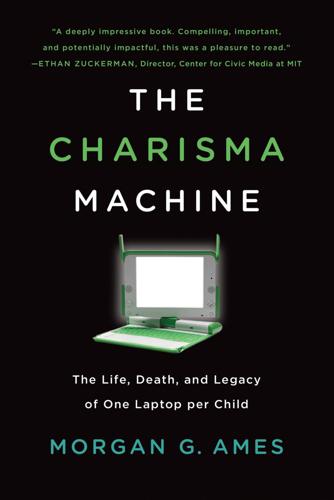
The Charisma Machine: The Life, Death, and Legacy of One Laptop Per Child
by
Morgan G. Ames
Published 19 Nov 2019
Even though charismatic technologies hence possess and reinforce their own charisma, the media is often implicated in amplifying it (see Ames, Rosner, and Erickson, “Worship, Faith, and Evangelism”). 45. Watters, “Click Here to Save Education.” 46. See Ceruzzi, “Moore’s Law and Technological Determinism”; Dafoe, “On Technological Determinism”; Humphreys, “Technological Determinism.” 47. Kirsch, “The Incredible Shrinking World,” 542. 48. See Douglas, Listening In; Nye, American Technological Sublime; Mosco, Digital Sublime; Winner, “Technology Today.” 49. For more, see Winner, “Do Artifacts Have Politics?”; Winner, “Opening the Black Box”; Bijker, “Sociohistorical Technology Studies.” 50.
…
This is also one of the places where the seams between charisma and the world are most visible, as a charismatic technology’s acolytes maintain their devotion even in the face of contradictions.44 In their promises of action, however, charismatic technologies are deceptive: they make both technological adoption and social change appear straightforward instead of as a difficult process fraught with choices and politics. This gives charismatic technologies a spirit of technological determinism (or “technological solutionism”), whereby progress that a technology is supposed to cause is framed as natural and inevitable, thus overriding individual, social, institutional, or other kinds of agency—much like the “exceptionalism” of Weber’s charismatic leaders.45 Scholars in STS have been studying technological determinism for decades now and have sussed out the many ways it is wrong.46 But outside of those circles—and particularly in the technology development and design world—the belief is still commonplace.
…
It can lead believers to underestimate the sustained commitments (social, political, financial, infrastructural, etc.) needed for both technological adoption and social change. By the same token, charisma’s naturalizing force can make critique and debate appear unnatural—they are, after all, up against what appears to be a natural and inevitable path toward technologically determined progress. Historians have shown us, for instance, that when the United States was building its rail network in the mid-nineteenth century, the feelings of sublime awe and transcendence that the locomotive evoked across the nation led the United States to pay an enormous price in resources and lives in an attempt to realize the utopian promises of rail: the end of wars and parochialism, the merging of cultures, the very “annihilation of space and time.”47 Mosco and others have traced the sublime paths of a host of other technologies: radio, film, atomic energy—and of course computers and the internet.48 Although charisma is distinct from the technological sublime—it does not necessarily subsume reason with feelings of overwhelming awe—it is similar in upholding a belief that a technology such as OLPC’s laptop and its specially-designed software can provide a shortcut to peace and prosperity, even if governments do not actively recognize its potential for this.
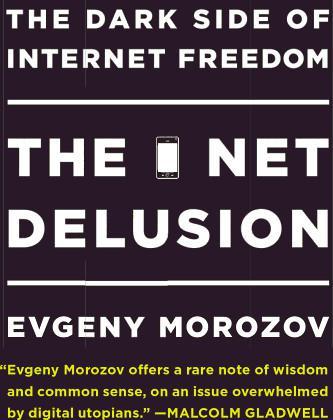
The Net Delusion: The Dark Side of Internet Freedom
by
Evgeny Morozov
Published 16 Nov 2010
Wise, George. “Technological Prediction, 1890-1940.” PhD diss., Boston University, 1976. Woolgar, S., and G. Cooper. “Do Artefacts Have Ambivalence? Moses’ Bridges, Winner’s Bridges and Other Urban Legends in S&TS.” Social Studies of Science 29, no. 3 (1999): 433. Wyatt, S. “Technological Determinism Is Dead; Long Live Technological Determinism.” In The Handbook of Science and Technology Studies, edited by Edward J. Hackett et al., 165. Cambridge, MA: MIT Press, 2008. CHAPTER 11 Arendt, Hannah. On Violence. New York: Harcourt, Brace, Jovanovich, 1970. Austin, E. K., and J. C. Callen. “Reexamining the Role of Digital Technology in Public Administration: From Devastation to Disclosure.”
…
But this only adds urgency to our quest to understand the societies it is supposed to “reshape” or “democratize.” Reshape them it may, but what is of utmost interest to policymakers is the direction in which this reshaping would proceed. The only way for them to understand it is to resist technological determinism and embark on a careful analysis of nontechnological forces that constitute the environments they seek to understand or transform. It may make sense to think about technologies as embodying a certain logic at an early stage of their deployment, but as they mature, their logic usually gives way to more powerful social forces.
…
Why search for more complex reasons if the establishment of democratic forms of government in Europe could be explained by the invention of the printing press? As the economic historian Robert Heilbroner observed in 1994, “history as contingency is a prospect that is more than the human spirit can bear.” Technological determinism—the belief that certain technologies are bound to produce certain social, cultural, and political effects—is attractive precisely because “it creates powerful scenarios, clear stories, and because it accords with the dominant experience in the West,” write Steve Graham and Simon Marvin, two scholars of urban geography.

Kitten Clone: Inside Alcatel-Lucent
by
Douglas Coupland
Published 29 Sep 2014
The next society-changing technology is currently hurtling at us like a meteor, and there’s zilch we can do to stop it. This notion that humans exist only to propagate ever-newer technologies, that we are merely what Marshall McLuhan called “the sex organs of technology,” is called technological determinism. Depressing. Or is technological determinism nonsense? Maybe we can control what we invent and when we invent it. Since 1925, Bell Labs has generated seven Nobel prizes and changed the course of humanity with stunning regularity. No California redwood forest full of brainstorming genius billionaires could compete with Bell Labs’ creative heyday of the mid-twentieth century: the transistor, information theory, lasers, solar energy, radio astronomy, microchips, UNIX, mobile phones, mobile networks—all invented here.
…
No California redwood forest full of brainstorming genius billionaires could compete with Bell Labs’ creative heyday of the mid-twentieth century: the transistor, information theory, lasers, solar energy, radio astronomy, microchips, UNIX, mobile phones, mobile networks—all invented here. Most of these inventions led to the Internet in one way or other, and many of them could plausibly only have been invented here, in the way they were. So much for technological determinism. And now the French own Bell Labs, which is a reasonably good thing, because being owned by Americans wasn’t doing Bell Labs much good. Bell Labs had been part of AT&T, which in 1984 was broken up as a result of an antitrust suit. In 1996 Bell Labs was spun off as part of Lucent Technologies, a 1990s dream stock that went from $7.56 to $84 in four years, only to be nearly destroyed by the 2001 telecom crash (a.k.a.
…
I’ve noticed that the moment you approach the point in a conversation when you might ask scientists to make a prediction, their bodies start to clench. And when you actually ask them to predict the future, they freeze completely, then say, ‘No, I can’t do that for you.’ ” “So, Doug, do you believe in technological determinism?” “I’m unsure. Bell Labs is making me feel differently about it.” “How so?” “Well, you guys are an industrial research laboratory, right?” “Yes. And we have Bell Labs in eight locations around the planet, not just here.” “Your job has always been to do research that furthers the future of communication.
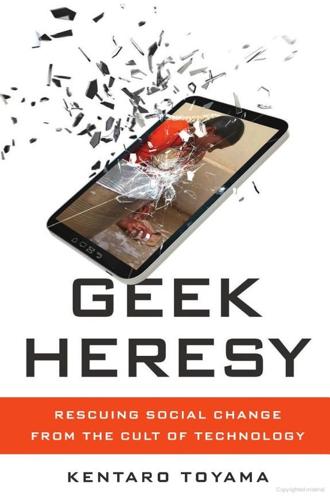
Geek Heresy: Rescuing Social Change From the Cult of Technology
by
Kentaro Toyama
Published 25 May 2015
Chapter 2: The Law of Amplification A Simple but Powerful Theory of Technology’s Social Impact 1.Rangaswamy (2009). 2.Heilbroner’s (1967) article is among the most cited in the technology and society literature, probably because it is one of the few in which a respected scholar sides unabashedly with technological determinism. Heilbroner (1994) later softened his stance, but only slightly. Today, few scholars admit to pure technological determinism, but as the examples later in this chapter show, there are plenty of influential nonacademics who subscribe to its views. MacKenzie and Wajcman (1985) refer to technological determinism as the “single most influential theory of the relationship between technology and society.” 3.Feenberg (1999), p. 78. 4.Star Trek: First Contact (1996). 5.Schmidt and Cohen (2013), p. 257.
…
These terms will be defined in a moment, but one thing that jumped out was that the scholars fought like Furies. For example, the economic historian Robert Heilbroner wrote, “That machines make history in some sense . . . is of course obvious.”2 This view is called technological determinism, because it implies that technology determines social outcomes. But if some find it obvious, it is nevertheless ridiculed by critics. Philosopher Andrew Feenberg responded with sarcastic sympathy, writing that “the implications of determinism appear so obvious that it’s surprising to discover that [its premises do not] withstand close scrutiny.”3 Yet for all the debate, there is plenty of agreement, too.
…
Institute for Women’s Policy Research, Fact Sheet IWPR #C350, www.iwpr.org/publications/pubs/the-gender-wage-gap-2012-1/. Heilbroner, Robert L. (1967). Do machines make history? Technology and Culture 8:335–345. ———. (1994). Technological determinism revisited. Pp. 67–78 in Merritt Roe Smith and Leo Marx, eds., Does Technology Drive History? The Dilemma of Technological Determinism. MIT Press. Henrich, Joseph, Robert Boyd, Samuel Bowles, Colin Camerer, Ernst Fehr, and Herbert Gintis. (2004). Foundations of Human Sociality: Economic Experiments and Ethnographic Evidence from Fifteen Small-Scale Societies.

Utopias: A Brief History From Ancient Writings to Virtual Communities
by
Howard P. Segal
Published 20 May 2012
For Marx and Engels, then, the same science and technology that would help destroy capitalism would thereafter help to build a genuinely good, if not utopian, society. And, if the automated equipment at the heart of the new technology could be enslaving, it could also be liberating. Contrary to what is often said about them, Marx and Engels were not crude technological determinists; they did not believe that the form taken by technology determines the social conditions under which humans live.27 They primarily emphasized the mode of production, insisting that the prevailing kind of labor or productive activity was conditioned by the existing state of technology. The mode of production was predominantly social, and the mode of production under capitalism was wage labor.28 On the one hand, Marx and Engels, along with Owen and Fourier, turned utopianism into a legitimate mode of thought by making utopia seem possible rather than impossible.
…
Nye terms his version of a technological plateau a “recovery narrative.”8 Despite these counter-narratives and the protests accompanying them, the eventual triumph of the nation’s major transportation and communications systems brought into being two related concepts that became part of most Americans’ basic beliefs long before they were formally categorized by scholars: “technological determinism,” or the conviction that technology shapes society and culture; and the “technological imperative,” or the conviction that technological advances must be pursued and implemented simply because they can be pursued and implemented, regardless of the consequences for society. Not surprisingly, the unprecedented abundance brought about by technological advances hardly benefited everyone.
…
Both groups believed that the exportation of American science and technology, such as agricultural chemicals and equipment, to the aforementioned “backward” lands would turn the tide within them from communism to capitalism or undermine any efforts to remain ideologically neutral. These politicians and social scientists used a very traditional notion of “technological determinism” and ignored historical contexts that might have tempered their utopian expectations. They assumed 102 Growing Expectations of Realizing Utopia that the sheer transfer abroad of American and Western European science and technology would steadily alter centuries-old native cultures in the direction of American and Western European culture, not least American and Western European democracy.

A World Without Email: Reimagining Work in an Age of Communication Overload
by
Cal Newport
Published 2 Mar 2021
In Lynn White Jr.’s study of the stirrup we find a classic example of a technology introduced for a simple reason (to make riding horses easier) leading to vast and complicated consequences never imagined by its inventors (the rise of medieval feudalism). In the second half of the twentieth century, many scholars in the field of the philosophy of technology began to research similar case studies of unintended consequences. Over time, this idea that tools can sometimes drive human behavior became known as technological determinism. The literature on this philosophy is filled with fascinating examples. One of the better-known determinist books is Neil Postman’s 1985 classic, Amusing Ourselves to Death. In this short treatise, Postman argues that the format through which mass media is delivered can impact the way a culture thinks about the world.
…
“Print put forward a definition of intelligence that gave priority to the objective, rational use of the mind,” he writes, “and at the same time encouraged forms of public discourse with serious, logically ordered content.”16 It was this new way of thinking—not just newly available information—that suddenly made intellectual innovations such as Enlightenment philosophy and the scientific method natural next steps. Gutenberg, in other words, thought he was setting information free, but in reality, he was changing fundamentally what information we treated as important. A more modern example of technological determinism is the introduction of the Like button to Facebook. As revealed by contemporaneous blog posts written by the design team, the original purpose of this feature was to clean up the comments below users’ posts. Facebook engineers noticed that many such comments were simple positive exclamations, like “cool” or “nice.”
…
Soon every other major platform introduced similar approval indicator streams—favorites, retweets, auto-tagging photos, streaks—as part of a technological contest played out on the field of what became known as attention engineering, a battle that left in its wake a small number of massively powerful technology platform monopolies and a weary populace exhausted by a life increasingly dominated by handheld glowing screens. All this because of a small number of engineers who desired to make social media comments less cluttered.17 * * * — A key property of technological determinism is that the innovation in question alters our behavior in ways that were neither intended nor predicted by those first adopting the tool. This idea might make you uncomfortable, as it seems to impart some notion of autonomy to inanimate objects—as if the technology itself is deciding how it should be used.

Bomb Scare
by
Joseph Cirincione
Published 24 Dec 2011
The “prestige” model emphasizes the symbolic value of nuclear weapons: states see the weapons as a prerequisite for great power status. The “domestic political” model views states as units made up of competing internal factions within which influential bureaucratic and military actors can lead a state to nuclear weapons. The “technology” model, or technological determinism, contends that if a state is technologically capable of developing nuclear weapons, then the allure of such a scientific accomplishment will be too much for most leaders to resist. Finally, economic factors, though not enough to stand on their own as a causal model, interact with the other four drivers of nuclear proliferation, sometimes encouraging nuclear proliferation and sometimes restraint.
…
Campbell and Sunohara conclude, “The depth of antinuclear sentiment is such that only major changes in the international or domestic environment, and probably only a combination of such changes could engender a domestic political environment more permissive toward Japan’s acquiring nuclear weapons.”67 TECHNOLOGICAL DETERMINISM Some experts contend that if a state has the technological ability to develop nuclear weapons, then it will do so; the awesome power of nuclear technology and arms is too much for most leaders to resist. This argument often appeared as nuclear scientists debated among themselves the morality of building atomic, then hydrogen bombs.
…
Once the technology is in hand, or seems fairly easy to acquire, it becomes much more difficult for national leaders to resist the entreaties of the military, industrial, or scientific proponents of new and better weapons. The decision of the United States to build the hydrogen bomb is probably the most compelling example of technological determinism at work. Four months after the Soviet atomic test ended the U.S. monopoly, President Truman announced that the United States would build new, more powerful weapons. Washington would develop the hydrogen bomb with 1,000 times more explosive force than the fission bombs used on Japan. There was no urgent security rationale for pursuing such a weapon.
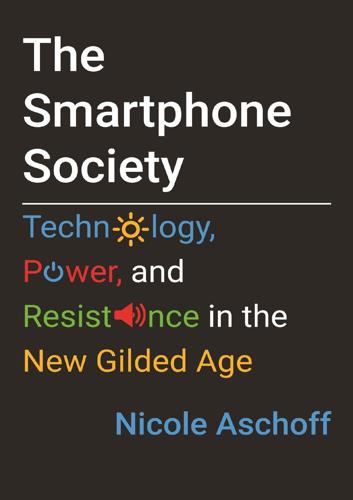
The Smartphone Society
by
Nicole Aschoff
The common sense of the Silicon Valley spirit, whether regarding jobs, or algorithms, or whatever, is laced with technological determinism, which, David Noble, a historian of technology, has long argued “absolves people of responsibility to change it and weds them instead to the technological projections of those in command.”40 Technology is designed, developed, and chosen by humans. It’s not an implacable force controlled by our alien overlords. People, not machines, are deciding the direction of society, and if we don’t like this direction we have the power to take a different route. Ordinary users and consumers are also guilty of technological determinism in framing the problems of our society and our critiques of Silicon Valley, often because this is simpler.
…
Often, the question posed is whether the smartphone is the cause of a particular outcome or phenomenon. This is understandable, given the sudden ubiquity of smartphones. But, as intuitive as it seems to put smartphones in the driver’s seat of social change, it is incorrect; it reproduces the common error of technological determinism—the belief that technology orders society, not the other way around. Arguments about whether smartphones cause or don’t cause this or that outcome situate technology outside social relations, positioning it as an isolated and independent force acting on preexisting social relations. This is not the case; technology and social relations evolve together.
…
Spigel, Make Room for TV, 3, 46. 50. Lears, Rebirth of a Nation, 8. 51. Benjamin, “The Work of Art in the Age of Mechanical Reproduction,” 91. 52. Postman, The Disappearance of Childhood. 53. Cited in Spigel, Make Room for TV, 54. 54. Putnam, Bowling Alone. 55. For a useful discussion of technological determinism, see the introductory essay in MacKenzie and Wajcman, The Social Shaping of Technology. 56. Zucman, “Global Wealth Inequality.” 57. Temin, The Vanishing Middle Class. 58. Federal Reserve Bank of New York, “Household Debt Jumps as 2017 Marks the Fifth Consecutive Year of Positive Annual Growth Since Post-Recession Deleveraging,” press release, February 13, 2018. 59.

Hacking Capitalism
by
Söderberg, Johan; Söderberg, Johan;
Radical scholars, anxious to reveal the political stakes behind technology and the possibility of intervention into these flows, spare no energy in attacking deterministic viewpoints. Raymond Williams, a stern critic of technological determinism, lays down that: “The moment of any new technology is a moment of choice.”23 Conversely, however, for a choice to be of any meaning, it must delimit in some way the choices available after it has been made.24 The fascination in the computer underground for Marshall McLuhan’s contemplations (declared by Wired Magazine as their protective saint and Raymond Williams’ favoured target when attacking technological determinism) should be seen in this light. The influence of McLuhan among hackers must somehow be consistent with their grasping of technology as a politically contested field.
…
The Marxist writer Nick-Dyer Witheford pins down the key difference that separates Marxism from its post-industrial look-alikes: ”That rewriting retains the notion of historical progress towards a classless society but reinscribes technological advance rather than class conflict as the driving force in this transformation”.5 The information-age literature is more plagued with technological determinism than any version of historical materialism ever was.6 Despite that these shortcomings of the historical materialist theory have been severely criticised by opponents of Marxism, as well as by many self-critical Marxists, postulations about the information age often go unquestioned, except by Marxists.
…
What happens in one area, a changed self-image in the computer underground, for example, directly translates into the other area, the advance of a different technology. The struggle for free source code is an excellent point of reference when we contemplate over the determination of structures versus the agency of humans, the Gordian knot of Marxist philosophy. The strong inclination towards technological determinism in the computer underground is a contradictory mixture of thought and praxis. Just as with their endorsement of information-age literature, everything is not what first meets the eye. For hackers, in contrast to almost everyone else, technology increases their collective strength. Technophilia reassures hackers of their eventual victory just as dialectical historical materialism did to revolutionaries in those days when communism was thought of as the fixed endpoint of history.
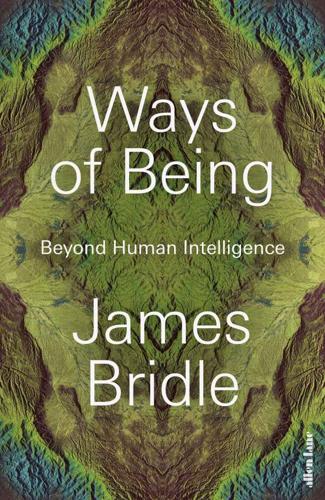
Ways of Being: Beyond Human Intelligence
by
James Bridle
Published 6 Apr 2022
The wooden stakes that march for miles across the landscape of Epirus, the holes being drilled, the explosions that shake the ground: these are alien probes, the operations of an artificial intelligence optimized to extract the resources required to maintain our current rate of growth, at whatever cost necessary. Some of the strongest warnings about AI have in fact come from its greatest proponents: the billionaires of Silicon Valley who have most bullishly pushed a narrative of technological determinism. Technological determinism is the line of thinking which decrees that technological progress is unstoppable. Given that the rise of AI is as inevitable as that of computers, the internet, and the digitization of society as a whole, we should strap ourselves in and get with the programme. Yet Elon Musk, creator of PayPal and owner of Tesla and SpaceX, believes that AI is the ‘biggest existential threat’ to humanity.10 Bill Gates, the founder of Microsoft – whose Azure AI platform keeps Shell’s oil platforms humming – has said he doesn’t understand why people are not more concerned about its development.11 Even Shane Legg, co-founder of the Google-owned AI company DeepMind – best known for beating the best human players at the game of Go – has gone on the record to state that ‘I think human extinction will probably occur, and technology will likely play a part in this.’
…
This problem is compounded by our technologies, particularly when they originate in war and violence, as most of our contemporary technologies do. The internet is a clear example of this: it emerged from the twin poles of Cold War paranoia – distributed networks designed to withstand atomic attack and the Californian Ideology, which in the 1990s traded the hippy ideals of liberation and togetherness for technological determinism and neoliberal capitalism.21 It’s this combination of military power and corporate profit-seeking which has shaped the modern internet, writing structural violence and surveillance capitalism into its source code. Radar image showing ring angels at sunrise on 1 September 1959. But even military technologies can reveal surprising things.
…
Invoking personhood to justify human exceptionalism and deny rights to animals ultimately succeeds only in eviscerating the theory and practice of human rights for human beings. If Sophia is merely a marketing gimmick and a technological sideshow – and she is – she might still be directing us towards something important. Like the problem of artificially intelligent systems in general, the problem of Sophia’s legal status is not merely one of technological determinism or political necessity. Rather, her role might be to draw our attention to a far greater problem: who matters, who counts and who has agency and freedom. The Telepaths are only a thought experiment for now, but they are an exercise in the same vein as the story of the runaway paperclip factory, in which a poorly constrained AI overruns the planet: a shadow, cast by the spectre of artificial super-intelligence, of what awaits us in the future.

Road to Nowhere: What Silicon Valley Gets Wrong About the Future of Transportation
by
Paris Marx
Published 4 Jul 2022
People moved there to get away from the city, hollowing out the urban core. This pattern can be seen in the cities and towns of the United States, Canada, and parts of Europe in the years following World War II, but it certainly was not set in stone as soon as the first Model T was built in 1908. Such a technological determinism, one that positions the technology as the primary driver of the last century of urban development, ignores all the interests that were fighting over the future direction of streets, cities, and even countries. These interests had different visions for the role of the new automotive technology within the broader urban landscape.
…
Critical scholars Richard Barbrook and Andy Cameron dubbed the ideology that grew out of this movement, especially as it found common cause with the neoliberal policies of the 1980s, the “Californian Ideology.” The way of thinking it embodied “simultaneously reflects the disciplines of market economics and the freedoms of hippie artisanship. This bizarre hybrid is only made possible through a nearly universal belief in technological determinism.”10 The counterculture’s aversion to politics was central to the Californian Ideology. Its adherents believed social change would happen by engaging in the market and trusting in the process of technological development to empower not only the individual, but also the wider world. The path to a better world was no longer in retreating from society or simply engaging with corporate America, but faith was also put in technology itself as the means to address social and economic challenges.
…
First, it could be framed as just another example of a group of people overreacting to the presence of a new technology, similar to the traditionalists, moralists, and those who did not want to see prevailing power and gender dynamics overturned as the bicycle empowered women in the 1890s. Given the strong belief in technological determinism among the powerful people pushing these ideas for the future of mobility, it is no surprise that this was one of the prominent responses, especially since it fit into an existing narrative. In recent years, there has been a lot of discussion about “not in my backyard,” or NIMBY, sentiment in California.

Marxian Economic Theory
by
Meghnad Desai
Published 20 May 2013
For ~rx it was a basic social relationship - class monopoly of means of production - which gave all profits the character of surplus value. In general, however, ~rx gave immense importance to class struggle in determining such things as the rate of exploitation and the organic composition of capital. One must not therefore regard r and.gi as technologically determinate constants, but as variables in which technology as much as social forces such as the course of the class struggle will figure as determining variables. A high rate of employment, a high degree of unionisation, international rivalry among national capitalists - all these could lead to a different division of total value between profits and wages.
…
To quote Morishima, "Values are thus detennined socially. But it must be noted that they are detennined only by technologicial coefficients, aij's and Li's; they are independent of the market, the class structure of the society, taxes and so on." Morishima, like Samuelson, makes values technologically determinate. (Notice that Samuelson's input-output table can be written as above when combined with his technological equations. Thus bl is similar to all and bZ to alZ. Al is the labour time equivalent of K and AZ of Yand so on). Now the rate of exploitation can be defined in the value domain (A) and the rate of profit in the price domain (p).
…
The wage-profit curve c~ot therefore throw any light on anhistorical phenomenon, a phenomenon taking place over time such as the class struggle. It remains an esoteric tool to clarify certain logical puzzles in economic theory; it is of no help in studying social relations. Modern interpretations of Marx whether by economists hostile to his ideas or by his champions, seem to rely on a technological determinism based on a physical input-output system. This is reinforced by mechanistic assumptions about the determinants of the wage rate - in most cases a constant subsistence wage rate tends to be assumed. Having thus shorn Marxian theory of its historical and social content, having stripped it of its qualitative dynamics, an emasculated version of his model is retained to be criticised or worshipped, but not to be used as a tool for advancing our understanding of the real world.
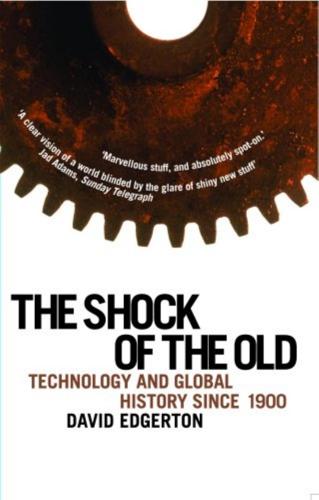
The Shock of the Old: Technology and Global History Since 1900
by
David Edgerton
Published 7 Dec 2006
For some soldiers it revealed the need to return to older military thinking rather than what was seen as an engineers’ quantitative approach to war, a position reflected in the film Apocalypse Now.29 This US reverse had a major consequence for thinking about technology on the Left. The socialist and communist movements had been deeply committed to some kind of economic or technological determinism – this was a standard official interpretation of Marxism in the first two-thirds of the twentieth century. It suggested that military might followed from technological might. Thus, for Stalin, economic and technological development was a matter of military necessity. Yet even within this tradition the view emerged that morale and political commitment could overcome technologically superior forces.
…
Yet even within this tradition the view emerged that morale and political commitment could overcome technologically superior forces. Chinese Maoists, in particular, focused as they were on the peasantry, saw both reactionaries and nuclear weapons as ‘paper tigers’. But in the 1960s, the Western Marxists too turned decisively away from ‘economism’ and indeed technological determinism, to emphasise political action, culture, ideology. Peasants and students would form the new revolutionary vanguard, not the industrial working class of the rich countries. Guerrilla rebellions took place in many parts of the world. In Africa and South America a wave of military activity was stimulated by the possibility of victory.
…
Calling for innovation is, paradoxically, a common way of avoiding change when change is not wanted. The argument that future science and technology will deal with global warming is an instance. It is implicitly arguing that in today’s world only what we have is possible. Yet we have the technological capacity to do things very differently: we are not technologically determined. Getting away, as this book has, from the conflation of use and invention/innovation will in itself have a major impact on our thinking about novelty generation. The twentieth century was awash with inventions and innovations, so that most had to fail. Recognising this will have a liberating effect.
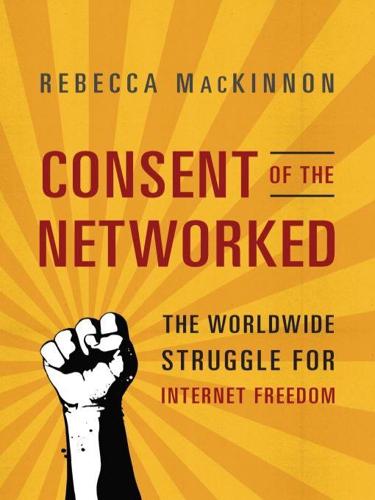
Consent of the Networked: The Worldwide Struggle for Internet Freedom
by
Rebecca MacKinnon
Published 31 Jan 2012
Movements to create an ideal society through the creation of online communities led by charismatic leaders with utopian visions claiming to transcend all of the political ambiguities and hypocrisies of “meat space” are more than likely to produce Internet-age versions of the same problems that caused tremendous human suffering in the twentieth century. A related danger is technological determinism: the belief that technology can be used to solve problems whose roots ultimately lie in human social and ethical behavior. Placing excessive expectations on the ability of technology to defeat repression can cause individuals to abdicate individual responsibility. Variants of technological determinism are often spouted by Internet company executives, who claim that by making the world more connected, they are inevitably and inexorably helping to make it more democratic in the long run, whatever the short-term compromises or collateral damage might be.
…
Variants of technological determinism are often spouted by Internet company executives, who claim that by making the world more connected, they are inevitably and inexorably helping to make it more democratic in the long run, whatever the short-term compromises or collateral damage might be. This argument is wearing thin against attempts such as the Global Network Initiative to convince companies that they need to allow themselves to be held publicly accountable if they want the public to trust them over the long term. Technological determinism is as dangerous as historical determinism, the worldview underpinning the philosophies of Marx and Hegel, who believed that history was inevitably and inexorably moving the human race toward a certain endpoint. Marxist revolutionaries believed they were in the vanguard of the historically inevitable.
…
Prakash, Pranesh PROTECT IP (Preventing Real Online Threats to Economic Creativity and Theft of Intellectual Property Act of 2011) Public Citizen Putin, Vladimir Putin’s Russia: Life in a Failing Democracy (Politkovskaya) QQ Ran Yunfei Rao Jin Reagan, Ronald Recording Industry Association of America RenRen Reporters Without Borders Research in Motion (RIM) Robert, Kirrily (Skud) Roh Moo-hyun Rosenberg, Jonathan Rosenthal, Uri Ruggie, John Runet Rushkoff, Douglas Russia abuse of intellectual property enforcement Internet Microsoft’s protection of human rights activists Said, Khaled Salem Pax Sarkozy, Nicolas Saudi Arabia Schmidt, Eric Schrage, Elliott Searls, Doc Second Treatise of Government (Locke) Serval Sharm El-Sheikh, Egypt Shi Tao Shirky, Clay Sierra, Kathy Simon Wiesenthal Center Sina Sisario, Ben Skud (Kirrily Robert) The Slide from “Self Regulation” to Corporate Censorship (European Digital Rights Initiative) Smith, Brad Social Science Research Council Software anticensorship data mining denial-of-service free/open source Soghoian, Christopher Sohu South Korea, legislation to curb anonymity in Sparapani, Tim Splash Stallman, Richard Status Net Stern magazine Students for Free Culture Sunstein, Cass Surveillance circumvention technology copyright enforcement and intermediary liability mobile phones and technology, sales of by Western companies through Internet service providers See also United States, surveillance in Syria, antigovernment protests in Syrian Electronic Army (SEA) T-Mobil Tactical Technology Collective TalkTalk Tamm, Thomas TCP/IP (Transmission-Control Protocol/Internet Protocol) Tea Party Technological determinism Technology companies, responsibilities of Tehrani, Hamid Telecomix Telefonica del Peru Tencent Economist, on lack of competition in Internet access Thunderbird Tian, Edward Tiananmen Square protests (1989) Tocqueville, Alexis de Tor Torbutton Torture in Egypt blog Torvalds, Linus Transparency Report Treaty of Westphalia (1648) Tsui, Lokman Tunileaks Tunisia activism in government censorship regime in government-employed hackers Twitter activism and refusal to provide account information to government Speak to Tweet use of by activists Ultrasurf Ultrareach UN Human Rights Council UNESCO (United Nations Educational, Scientific and Cultural Organization) United Arab Emirates United Kingdom (UK) censorship in intellectual property laws in United States, Internet freedom policy of contradictions in dangers of cyber-utopianism obsession with circumvention State Department funding for treatment of Internet as instrument for regime change United States, surveillance in disclosure laws, necessity for Electronics Communications Privacy Act of 1986 (ECPA) Foreign Intelligence Surveillance Act (FISA) Amendments Act (2008) government requests for subscriber information National Security Letters (NSL), unconstitutionality of Patriot Act (2001) public accountability whistle-blowers wiretapping of Internet communications Universal Declaration of Human Rights US National Security Agency (NSA) US Senate Judiciary Committee Vahid Online Vaidhyanathan, Siva Vedder, Eddie Vendor Relationship Management Verizon Verizon Wireless Video Hub Vietnam, Yahoo’s human rights decision in Viral Spiral (Bollier) Vodafone Voluntary Principles on Security and Human Rights von Hippel, Eric Wahab, Nadine Wall Street Journal on censorship software products on Cisco’s sales in China on help for Libyan rebel Internet network Wang Chen Wang Xiaoning Washington Times, on sale of surveillance products We Rebuild The Wealth of Networks (Benkler) Websense Weibo Wen Jiabao Wen Yunchao WikiLeaks denial of service to disclosure of diplomatic cables by implications of release of government list of blocked websites by Twitter refusal to provide account information use of leaked diplomatic cables by Tunileaks web hosting by Pirate Party, Sweden Wikipedia Willner, Dave Windows WITNESS Wong, Nicole WordPress World Economic Forum World Organization for Human Rights USA World Summit for the Information Society (WSIS) World Wide Web, invention of World Wide Web Consortium (W3C) Wu, Harry Wu, Tim Xiao Qiang Yahoo arrest of Shi Tao and Compliance Guide for Law Enforcement Global Network Initiative (GNI) and Yan Xiaoling Yandex Yang, Jerry York, Jillian You Are Not a Gadget (Lanier) YouTube Yu Lin Zaoui, Sami ZDNet Zemlin, Jim Zhao Jing (Michael Anti) Zhou Shuguang (Zola) Zimmermann, Jérémie Zola (Zhou Shuguang) ZTE Zuckerberg, Mark Zuckerberg, Randi Zuckerman, Ethan Copyright © 2012 by Rebecca MacKinnon Published by Basic Books, A Member of the Perseus Books Group All rights reserved.
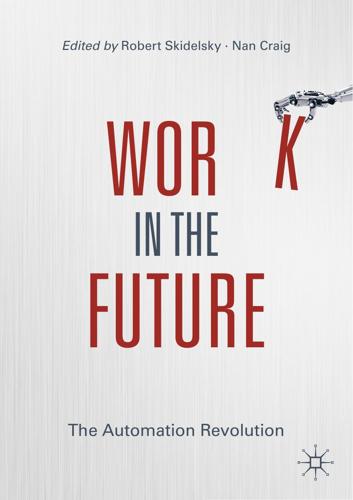
Work in the Future The Automation Revolution-Palgrave MacMillan (2019)
by
Robert Skidelsky Nan Craig
Published 15 Mar 2020
This invokes all kinds of questions about the relationship between consumption and happiness, and the damage done to the planet by the constant pursuit of material wealth. Is technology determinative? Even technological utopians assume technological invasion takes place in a social and economic context, which determines what is invented, how quickly inventions are applied and so on. Historically, inventions did not necessarily become widely used; the history of technology, up until the early modern period, was patchy rather than progressive. Automata, for instance existed in the ancient world, but they were novelties for kings and did not prompt wider technological change. Implicit in modern arguments is technological determinism. It under pins nearly everything currently being said about automation and we need to tease out its implicit assumptions.
…
, 29 Srnicek, Nick, 5, 59, 179n2 Star Trek, 146–148 Status goods, 88 Stirling, Alfie, 177 Stoics (view of work), 74 Stradivarius, 33–35 Subsistence, 27, 38, 40, 41, 44, 45, 73, 75, 76 Summers, Larry, 2 Supply and demand, 16, 21 Susskind, Daniel, 5 Susskind, Richard, 127, 132 T Tasks routine vs. non-routine, 126, 127, 129, 131 simplification, 91, 92 Taylor, Frederick Winslow, 30 Technological determinism, 5 Technological progress, 9, 18, 59, 89, 93, 96, 131, 176 Technological unemployment, 2, 6, 10, 16, 160, 173, 192 Technology, 2–5, 7, 9, 16–19, 27–30, 35, 57, 59, 61, 62, 75, 83–96, 110, 111, 115, 117, 119, 120, 126, 129, 131, 133, 139, 140, 145, 149, 150, 160, 161, 180, 181, 189–195, 198–200 Terkel, Studs, 4 Textile industry, 85, 182 3D printing, 35 Time and motion studies, 30 Toffler, Alvin, 159 Tokumitsu, Miya, 73 Tools/tool-making, 11, 26–28, 34, 35, 70, 109, 149, 197, 198 Trades Union Congress (TUC), 175, 177 Trump, Donald, 94, 95 Turello, Dan, 103 Turing, Alan, 100, 105 Turing test, 91, 101n1 U Uber, 6, 133–137 Uberisation (of the economy), 27, 133, 134, 184 Index Unemployment, 10, 11, 16, 17, 59, 60, 68, 78, 89, 160, 164, 171, 178, 179, 183, 193, 195 Unions, 68, 69, 136, 176–178, 182, 184, 185, 193 United Kingdom, 6, 26, 68, 127, 151, 163, 164, 175–185 Universal Basic Income (UBI), 70, 78, 171, 199 USA, 15, 28, 68, 83, 85, 86, 89, 126, 151, 165, 166, 178, 194 Utility, 55, 62, 94, 166 V Value extraction of, 134 labour theory of, 165 of work, 11, 31, 58, 60, 61, 65, 66, 73, 163, 165–167 Van Wanrooy, Brigid, 178 Veblen, Thorstein, 27, 56–58, 62 Venture capital, 111, 114, 135 Violin making, 34 Vivarelli, Marco, 191 Vocational training, 68 Voice, 69, 106, 147, 159 Volf, Miroslav, 176, 180 Vonnegut, Kurt, 158, 160 Walsh, Toby, 119 Weaving industry, 18, 29, 38, 85 Weber, Max, 75 Weeks, Kathi, 79 Welfare, 5, 54, 60, 66–70, 135, 160, 171 Welfare state, 66, 69, 70, 160, 171 Welfarist understanding of work, 65 Wellbeing, 19, 27, 66, 177, 179 West, Darell, 196 Western Europe, 4, 37, 39, 44 Williams, Alex, 59, 179n2 Williamson, O, 55 Wilson, Frank, 34 Work as a cost/burden, 13, 18, 44, 55, 57, 58, 60, 75, 77, 78 freedom from, 39, 60, 77, 78 as meaningful, 76, 77, 179, 180 as pleasurable, 3 Workforce skills, 6 Working hours increase vs falls in, 19 part-time vs. full-time, 181 targeted reduction of, 185 Working Hours Adjustment Act 2000, 181 ‘Working poor’ model, 67, 68 Work-life balance, 79, 179 Wright, Chris F., 185 W Wages minimum, 69 stagnation, 87, 89, 94, 183 211 Z Zuckerberg, Mark, 138

The Nature of Technology
by
W. Brian Arthur
Published 6 Aug 2009
Chase, Early Trade Unionism, Ashgate, Aldershot, UK, 2000; and W. H. Fraser, A History of British Trade Unionism 1700–1998, Macmillan, London, 1999. 198 “required and eventually… jailer.”: Landes, op. cit., p. 43. 198 There is… inevitable: The notion that technology determines the future economy and future social relations is called technological determinism. Marx is often accused of it. “The hand-mill gives you society with the feudal lord; the steam-mill society with the industrial capitalist.” Rosenberg argues convincingly that Marx was too subtle to be a determinist. 199 Problems as the… Solutions: Friedrich Rapp mentions this in passing.
…
We saw earlier that very many different combinations, very many arrangements, can solve the problems posed by technology. Which ones are chosen is in part a matter of historical small events: the order in which problems happen to be tackled, the predilections and actions of individual personalities. The actions, in other words, of chance. Technology determines the structure of the economy and thereby much of the world that emerges from this, but which technologies fall into place is not determined in advance. Problems as the Answer to Solutions I have talked about this unfolding of structure as a constant remaking of the arrangements that form the economy; one set of arrangements sets up conditions for the arrival of the next.
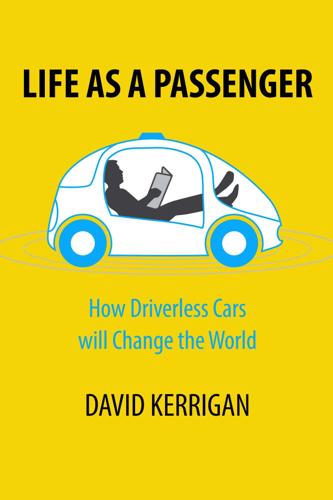
Life as a Passenger: How Driverless Cars Will Change the World
by
David Kerrigan
Published 18 Jun 2017
How will self-driving cars make left turns across oncoming traffic with solar glare?’ All of these questions must be answered, of course, but I believe it’s not too early to ask what we want of the next car.” Sociologist and economist Thorstein Veblen introduced the concept of Technological Determinism[319] in the 1920s, which proposed that a society's technology determines the development of its social structure and cultural values. There seems little doubt that the technology for driverless cars will overcome its technological challenges at some point and offer genuinely new alternatives for transport, and all that entails and affects.
…
Shladover, University of California, Berkeley October 2, 2013 [286] http://www.forbes.com/sites/neilhowe/2016/09/15/driverless-cars-unsafe-at-any-speed/ [287] https://newsroom.statefarm.com/download/234883/allstates2015-16deerstats-finalpdf.pdf [288] https://patents.google.com/patent/US9176500B1/ [289] http://www.bloomberg.com/news/articles/2016-09-13/robot-car-ethics-need-urgent-review-in-society-bill-ford-says [290] https://www.inverse.com/article/20716-germany-outlines-three-laws-of-robotics-for-self-driving-cars [291] http://moralmachine.mit.edu/ [292] https://www.researchgate.net/publication/301293464_The_Social_Dilemma_of_Autonomous_Vehicles [293] http://science.sciencemag.org/content/352/6293/1573 [294] https://www.wired.com/2016/06/self-driving-cars-will-power-kill-wont-conscience/ [295] Autonomes Fahren, https://link.springer.com/chapter/10.1007/978-3-662-48847-8_5/fulltext.html [296] http://www-nrd.nhtsa.dot.gov/Pubs/812102.pdf [297] http://www-nrd.nhtsa.dot.gov/pubs/812115.pdf [298] https://www.wired.com/2016/06/self-driving-cars-will-power-kill-wont-conscience/ [299] https://www.theguardian.com/technology/2016/aug/22/self-driving-cars-moral-dilemmas [300] http://wardsauto.com/autonomous-vehicles/google-self-driving-car-passes-woman-wheelchair-chasing-duck-test [301] https://www.1843magazine.com/technology/driving-lessons [302] Fighting Traffic: The Dawn of the Motor Age in the American City, Peter Norton [303] Nicholas Felton, NYT, 2008 [304] https://www.gov.uk/government/publications/driverless-vehicles-impacts-on-traffic-flow [305] http://www.mckinsey.com/industries/automotive-and-assembly/our-insights/disruptive-trends-that-will-transform-the-auto-industry [306] Rise of the Robots: Technology and the Threat of a Jobless Future Hardcover – 2015 [307] https://www.selectusa.gov/automotive-industry-united-states [308] http://www.bls.gov/ooh/transportation-and-material-moving/taxi-drivers-and-chauffeurs.htm [309] http://www.bls.gov/iag/tgs/iagauto.htm [310] http://www.roadandtrack.com/new-cars/future-cars/news/a28053/no-self-driving-porsches/ [311] http://www.ic3.gov/media/2016/160317.aspx [312] https://www.ft.com/content/8eff8fbe-d6f0-11e6-944b-e7eb37a6aa8e [313] https://www.transportation.gov/briefing-room/federal-automated-vehicles-policy-september-2016 [314] https://www.theguardian.com/cities/2015/apr/28/end-of-the-car-age-how-cities-outgrew-the-automobile [315] http://apps.who.int/gho/data/node.main.A995 [316] http://www.worldbank.org/en/news/feature/2016/05/05/transforming-the-worlds-mobility---its-time-for-action [317] http://www.bbc.com/news/magazine-37362728 [318] http://earlyindications.blogspot.ie/2016/08/early-indications-august-2016-next-car.html [319] http://communicationtheory.org/technological-determinism/ [320] http://www.newsweek.com/when-will-we-know-self-driving-cars-are-safe-501270 [321] http://www.consumerreports.org/autonomous-driving/with-autonomous-cars-how-safe-is-safe-enough/ [322] https://one.nhtsa.gov/nhtsa/av/av-policy.html [323] https://www.nhtsa.gov/staticfiles/rulemaking/pdf/Automated_Vehicles_Policy.pdf [324] http://www.post-gazette.com/opinion/Op-Ed/2016/09/19/Barack-Obama-Self-driving-yes-but-also-safe/stories/201609200027 [325] http://www.popsci.com/cars/article/2013-09/google-self-driving-car#page-4 [326] https://isearch.nhtsa.gov/files/Google%20--%20compiled%20response%20to%2012%20Nov%20%2015%20interp%20request%20--%204%20Feb%2016%20final.htm [327] Paul Scullion, safety manager at the Association of Global Automakers [328] http://www.mercurynews.com/2016/09/02/driving-regulation-how-lyft-works-to-shape-ride-hailing-legislation/ [329] https://www.dmv.ca.gov/portal/dmv/detail/vr/autonomous/testing [330] http://money.cnn.com/2017/01/10/technology/new-york-self-driving-cars-ridesharing/index.html [331] https://www.wired.com/2016/05/detroit-wants-go-spot-self-driving-tech-big-automakers/ [332] http://imgur.com/a/gNXJj [333] http://fortune.com/2015/12/02/somerville-driverless-car/ [334] https://en.wikipedia.org/wiki/International_Driving_Permit#The_1949_convention [335] http://www.unece.org/info/media/presscurrent-press-h/transport/2016/unece-paves-the-way-for-automated-driving-by-updating-un-international-convention/doc.html [336] http://www.highwaycode.info/rule/160 [337] http://www.highwaycode.info/rule/126 [338] https://www.gov.uk/government/uploads/system/uploads/attachment_data/file/581577/pathway-to-driverless-cars-consultation-response.pdf [339] http://www.statisticbrain.com/driving-citation-statistics/ [340] http://www.telegraph.co.uk/news/uknews/road-and-rail-transport/11566026/How-is-your-driving-Half-of-drivers-admit-breaking-traffic-laws.html [341] https://www.brookings.edu/wp-content/uploads/2016/06/desouza.pdf [342] http://chicago.suntimes.com/news/7/71/1345175/judge-declares-red-light-speed-cam-tickets-void-city-violated-due-process [343] https://www.congress.gov/bill/115th-congress/senate-bill/680 [344] https://www.ftc.gov/system/files/attachments/press-releases/ftc-nhtsa-conduct-workshop-june-28-privacy-security-issues-related-connected-automated-vehicles/notice_connected_cars_workshop_with_nhtsa_1.pdf [345] https://autoalliance.org/connected-cars/automotive-privacy-2/principles/ [346] https://www.nhtsa.gov/technology-innovation/automated-vehicles [347] https://www.dmv.ca.gov/portal/wcm/connect/58a64bed-2bf3-449f-a270-822c208bb7f0/Volvo.pdf?
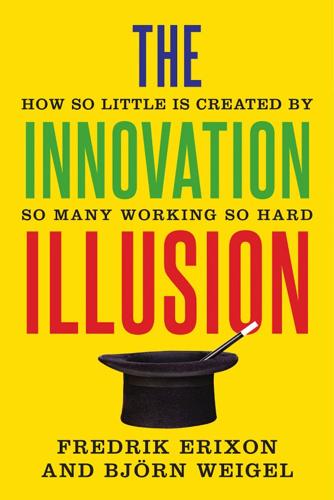
The Innovation Illusion: How So Little Is Created by So Many Working So Hard
by
Fredrik Erixon
and
Bjorn Weigel
Published 3 Oct 2016
Tech thinker Kevin Kelly has prophesied the rise of a new form of socialism as a consequence of unobstructed source technology and community-generated content.20 Capitalism is a highly adaptive creature, argues the contrarian economic reporter Paul Mason, but it is not going to survive the current revolution in information technology.21 Information, he argues, will destroy the price mechanism and new forms of collaborative production will do away with what is left of market capitalism. The passion for technological determinism also thrives on the other side of the ideological fence. “The Goliath of totalitarianism will be brought down by the David of the microchip,” mused conservative icon Ronald Reagan,22 who drew heavily from technology enthusiasts like George Gilder, an economist who later identified the billion-transistor chip as the cure to root out all economic evil.23 A British libertarian politician has predicted that the new digital age will be the end of politics.24 Neoconservatives similarly were quick to embrace the revolutionary promise of technology.
…
Interestingly, this view of regulation as an obstacle to contestable innovation runs counter to the conventional wisdom of a pending innovation blitz in Western economies. Both technological optimists and pessimists seem to share the view that radical and contestable innovation will be approved under existing regulations, allowing the process of market disruption to occur quickly. And that fits the paradigm of the planning machine, especially its technological determinism and disregard for those factors that govern whether an invention can be turned into market-renewing innovation. In this view, regulators and politicians will embrace the new innovation, regardless of its impact on competition, and allow timely and undisrupted access to consumers. Markets will thus flourish naturally on the back of innovation – and the speed at which innovation can ripple through various markets will not get arrested by policy barriers to entry.
…
They cannot stop flipping their mobiles and tablet screens; they cannot resist the fix. But they know it will destroy them in the end. Prophets of the New Machine Age argue that Western economies are inevitably advancing toward an inflection point where technology will destroy employment as we know it. Their high form of technology determinism is daunting; were Karl Marx alive today, he would be blushing in embarrassment for his comparative lapses from determinist faith. These prophets imagine a new society, or superstructure to use Marxist jargon, whose iteration is solely dependent on the growth of computing capacity, or what Marx would call the base.
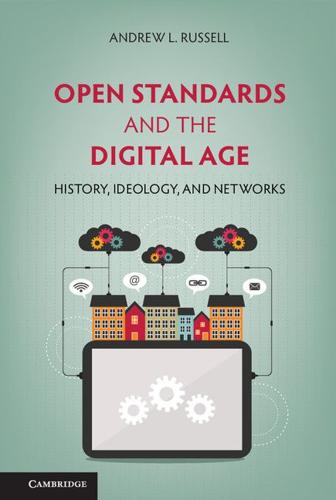
Open Standards and the Digital Age: History, Ideology, and Networks (Cambridge Studies in the Emergence of Global Enterprise)
by
Andrew L. Russell
Published 27 Apr 2014
This literature, taken as a whole, has sharpened our understanding of the ways that technologies and societies are mutually constitutive – or, as historian Thomas Hughes summarized, how technological systems are “both socially constructed and society shaping.”7 To comprehend the culture and technology of the twenty-first-century open world, we need to reject monocausal technological determinism, build on the work of social constructivists, and look closely at the “system builders” as well as at the social and institutional forces that shaped and constrained their actions. We should gain a better understanding of technology, but at the same time we must also come to terms with the organizational, economic, political, and cultural forces that do not exist independently of technology.
…
Varian, Information Rules: A Strategic Guide to the Network Economy (Boston: Harvard Business School Press, 1999), 103–172; Jonathan E. Nuechterlein and Philip J. Weiser, Digital Crossroads: American Telecommunications Policy in the Internet Age (Cambridge, MA: The MIT Press, 2005), 1–30. 3 Louis Galambos, “Looking for the Boundaries of Technological Determinism: A Brief History of the Telephone System,” in Renate Mayntz and Thomas P. Hughes, eds., The Development of Large Technical Systems (Boulder, CO: Westview Press, 1988), 143; Alvin von Auw, Heritage and Destiny: Reflections on the Bell System in Transition (New York: Praeger, 1983), 6; Tim Wu, The Master Switch: The Rise and Fall of Information Empires (New York: Knopf, 2010); Lillian Hoddeson, “The Emergence of Basic Research in the Bell Telephone System, 1875–1915,” Technology and Culture 22 (1981): 512–544. 4 Richard R.
…
AT&T estimated savings of $99 million from cable development, $50 million from the use of less expensive metals, and $5 million per year from improvements in switchboard cords. 10 Roland Marchand, Creating the Corporate Soul: The Rise of Public Relations and Corporate Imagery in American Big Business (Berkeley: University of California Press, 1998), 48, 86; Brooks, Telephone, 199–214. 11 Milton S. Goldberg, The Consent Decree: Its Formulation and Use (East Lansing: Michigan State University, 1962), 37–48. 12 Brooks, Telephone, 233–256; Louis Galambos, “Looking for the Boundaries of Technological Determinism: A Brief History of the Telephone System,” in Renate Mayntz and Thomas P. Hughes, eds., The Development of Large Technical Systems (Westview Press, 1988), 145–148; David M. Hart, “Antitrust and Technological Innovation in the US: Ideas, Institutions, Decisions, and Impacts, 1890–2000,” Research Policy 30 (2001): 923–936; and Vietor, Contrived Competition, 184–185; and Gerald W.

I, Warbot: The Dawn of Artificially Intelligent Conflict
by
Kenneth Payne
Published 16 Jun 2021
It’s a war that’s been going on for years already, and it’s likely to be the place where the new AI technologies we’ve been talking about are first used in combat. What can we learn about how AI will change warfare from thinking about near-future combat in scenarios like this? We’ll return to the A-Team later. First, a note of caution. Experts sometimes refer to ‘technological determinism’, the alluring idea that technologies will lead to dramatic social changes on their own—in our case to changes in warfare. This myopic view on tech overlooks two things—first, the way in which technology is itself a product of wider societal processes. These shape the creation of the technology itself, and also how it is employed.
…
It was embedded within a concept of operations, and it was that combination, allied to the motivation and relative freshness of the British airmen and their marginal advantage in terrain, that brought eventual success. So when we are considering our AI equipped group of special forces soldiers in Syria, we must keep in mind the allure of technological determinism. A technology might seem otherworldly, and it might offer dramatic new capabilities, far beyond those of the enemy, but that doesn’t mean we can reach easy conclusions about who would win any confrontation. If war was that readily determined, we’d simply need to input all the relevant information into a computer, which would spit out the victor’s identity, and the belligerents need not actually fight at all.
…
A-10 Warthog abacuses Abbottabad, Pakistan Able Archer (1983) acoustic decoys acoustic torpedoes Adams, Douglas Aegis combat system Aerostatic Corps affective empathy Affecto Afghanistan agency aircraft see also dogfighting; drones aircraft carriers algorithms algorithm creation Alpha biases choreography deep fakes DeepMind, see DeepMind emotion recognition F-117 Nighthawk facial recognition genetic selection imagery analysis meta-learning natural language processing object recognition predictive policing alien hand syndrome Aliens (1986 film) Alpha AlphaGo Altered Carbon (television series) Amazon Amnesty International amygdala Andropov, Yuri Anduril Ghost anti-personnel mines ants Apple Aristotle armour arms races Army Research Lab Army Signal Corps Arnalds, Ólafur ARPA Art of War, The (Sun Tzu) art Artificial Intelligence agency and architecture autonomy and as ‘brittle’ connectionism definition of decision-making technology expert systems and feedback loops fuzzy logic innateness intelligence analysis meta-learning as ‘narrow’ needle-in-a-haystack problems neural networks reinforcement learning ‘strong AI’ symbolic logic and unsupervised learning ‘winters’ artificial neural networks Ashby, William Ross Asimov, Isaac Asperger syndrome Astute class boats Atari Breakout (1976) Montezuma’s Revenge (1984) Space Invaders (1978) Athens ATLAS robots augmented intelligence Austin Powers (1997 film) Australia authoritarianism autonomous vehicles see also drones autonomy B-21 Raider B-52 Stratofortress B2 Spirit Baby X BAE Systems Baghdad, Iraq Baidu balloons ban, campaigns for Banks, Iain Battle of Britain (1940) Battle of Fleurus (1794) Battle of Midway (1942) Battle of Sedan (1940) batwing design BBN Beautiful Mind, A (2001 film) beetles Bell Laboratories Bengio, Yoshua Berlin Crisis (1961) biases big data Bin Laden, Osama binary code biological weapons biotechnology bipolarity bits Black Lives Matter Black Mirror (television series) Blade Runner (1982 film) Blade Runner 2049 (2017 film) Bletchley Park, Buckinghamshire blindness Blunt, Emily board games, see under games boats Boden, Margaret bodies Boeing MQ-25 Stingray Orca submarines Boolean logic Boston Dynamics Bostrom, Nick Boyd, John brain amygdala bodies and chunking dopamine emotion and genetic engineering and language and mind merge and morality and plasticity prediction and subroutines umwelts and Breakout (1976 game) breathing control brittleness brute force Buck Rogers (television series) Campaign against Killer Robots Carlsen, Magnus Carnegie Mellon University Casino Royale (2006 film) Castro, Fidel cat detector centaur combination Central Intelligence Agency (CIA) centre of gravity chaff Challenger Space Shuttle disaster (1986) Chauvet cave, France chemical weapons Chernobyl nuclear disaster (1986) chess centaur teams combinatorial explosion and creativity in Deep Blue game theory and MuZero as toy universe chicken (game) chimeras chimpanzees China aircraft carriers Baidu COVID-19 pandemic (2019–21) D-21 in genetic engineering in GJ-11 Sharp Sword nuclear weapons surveillance in Thucydides trap and US Navy drone seizure (2016) China Lake, California Chomsky, Noam choreography chunking Cicero civilians Clarke, Arthur Charles von Clausewitz, Carl on character on culmination on defence on genius on grammar of war on materiel on nature on poker on willpower on wrestling codebreaking cognitive empathy Cold War (1947–9) arms race Berlin Crisis (1961) Cuban Missile Crisis (1962) F-117 Nighthawk Iran-Iraq War (1980–88) joint action Korean War (1950–53) nuclear weapons research and SR-71 Blackbird U2 incident (1960) Vienna Summit (1961) Vietnam War (1955–75) VRYAN Cole, August combinatorial creativity combinatorial explosion combined arms common sense computers creativity cyber security games graphics processing unit (GPU) mice Moore’s Law symbolic logic viruses VRYAN confirmation bias connectionism consequentialism conservatism Convention on Conventional Weapons ConvNets copying Cormorant cortical interfaces cost-benefit analysis counterfactual regret minimization counterinsurgency doctrine courageous restraint COVID-19 pandemic (2019–21) creativity combinatorial exploratory genetic engineering and mental disorders and transformational criminal law CRISPR, crows Cruise, Thomas Cuban Missile Crisis (1962) culmination Culture novels (Banks) cyber security cybernetics cyborgs Cyc cystic fibrosis D-21 drones Damasio, Antonio dance DARPA autonomous vehicle research battlespace manager codebreaking research cortical interface research cyborg beetle Deep Green expert system programme funding game theory research LongShot programme Mayhem Ng’s helicopter Shakey understanding and reason research unmanned aerial combat research Dartmouth workshop (1956) Dassault data DDoS (distributed denial-of-service) dead hand system decision-making technology Deep Blue deep fakes Deep Green DeepMind AlphaGo Atari playing meta-learning research MuZero object recognition research Quake III competition (2019) deep networks defence industrial complex Defence Innovation Unit Defence Science and Technology Laboratory defence delayed gratification demons deontological approach depth charges Dionysus DNA (deoxyribonucleic acid) dodos dogfighting Alpha domains dot-matrix tongue Dota II (2013 game) double effect drones Cormorant D-21 GJ-11 Sharp Sword Global Hawk Gorgon Stare kamikaze loitering munitions nEUROn operators Predator Reaper reconnaissance RQ-170 Sentinel S-70 Okhotnik surveillance swarms Taranis wingman role X-37 X-47b dual use technology Eagleman, David early warning systems Echelon economics Edge of Tomorrow (2014 film) Eisenhower, Dwight Ellsberg, Daniel embodied cognition emotion empathy encryption entropy environmental niches epilepsy epistemic community escalation ethics Asimov’s rules brain and consequentialism deep brain stimulation and deontological approach facial recognition and genetic engineering and golden rule honour hunter-gatherer bands and identity just war post-conflict reciprocity regulation surveillance and European Union (EU) Ex Machina (2014 film) expert systems exploratory creativity extra limbs Eye in the Sky (2015 film) F-105 Thunderchief F-117 Nighthawk F-16 Fighting Falcon F-22 Raptor F-35 Lightning F/A-18 Hornet Facebook facial recognition feedback loops fighting power fire and forget firmware 5G cellular networks flow fog of war Ford forever wars FOXP2 gene Frahm, Nils frame problem France Fukushima nuclear disaster (2011) Future of Life Institute fuzzy logic gait recognition game theory games Breakout (1976) chess, see chess chicken Dota II (2013) Go, see Go Montezuma’s Revenge (1984) poker Quake III (1999) Space Invaders (1978) StarCraft II (2010) toy universes zero sum games gannets ‘garbage in, garbage out’ Garland, Alexander Gates, William ‘Bill’ Gattaca (1997 film) Gavotti, Giulio Geertz, Clifford generalised intelligence measure Generative Adversarial Networks genetic engineering genetic selection algorithms genetically modified crops genius Germany Berlin Crisis (1961) Nuremburg Trials (1945–6) Russian hacking operation (2015) World War I (1914–18) World War II (1939–45) Ghost in the Shell (comic book) GJ-11 Sharp Sword Gladwell, Malcolm Global Hawk drone global positioning system (GPS) global workspace Go (game) AlphaGo Gödel, Kurt von Goethe, Johann golden rule golf Good Judgment Project Google BERT Brain codebreaking research DeepMind, see DeepMind Project Maven (2017–) Gordievsky, Oleg Gorgon Stare GPT series grammar of war Grand Challenge aerial combat autonomous vehicles codebreaking graphics processing unit (GPU) Greece, ancient grooming standard Groundhog Day (1993 film) groupthink guerilla warfare Gulf War First (1990–91) Second (2003–11) hacking hallucinogenic drugs handwriting recognition haptic vest hardware Harpy Hawke, Ethan Hawking, Stephen heat-seeking missiles Hebrew Testament helicopters Hellfire missiles Her (2013 film) Hero-30 loitering munitions Heron Systems Hinton, Geoffrey Hitchhiker’s Guide to the Galaxy, The (Adams) HIV (human immunodeficiency viruses) Hoffman, Frank ‘Holeshot’ (Cole) Hollywood homeostasis Homer homosexuality Hongdu GJ-11 Sharp Sword honour Hughes human in the loop human resources human-machine teaming art cyborgs emotion games King Midas problem prediction strategy hunter-gatherer bands Huntingdon’s disease Hurricane fighter aircraft hydraulics hypersonic engines I Robot (Asimov) IARPA IBM identity Iliad (Homer) image analysis image recognition cat detector imagination Improbotics nformation dominance information warfare innateness intelligence analysts International Atomic Energy Agency International Criminal Court international humanitarian law internet of things Internet IQ (intelligence quotient) Iran Aegis attack (1988) Iraq War (1980–88) nuclear weapons Stuxnet attack (2010) Iraq Gulf War I (1990–91) Gulf War II (2003–11) Iran War (1980–88) Iron Dome Israel Italo-Turkish War (1911–12) Jaguar Land Rover Japan jazz JDAM (joint directed attack munition) Jeopardy Jobs, Steven Johansson, Scarlett Johnson, Lyndon Joint Artificial Intelligence Center (JAIC) de Jomini, Antoine jus ad bellum jus in bello jus post bellum just war Kalibr cruise missiles kamikaze drones Kasparov, Garry Kellogg Briand Pact (1928) Kennedy, John Fitzgerald KGB (Komitet Gosudarstvennoy Bezopasnosti) Khrushchev, Nikita kill chain King Midas problem Kissinger, Henry Kittyhawk Knight Rider (television series) know your enemy know yourself Korean War (1950–53) Kratos XQ-58 Valkyrie Kubrick, Stanley Kumar, Vijay Kuwait language connectionism and genetic engineering and natural language processing pattern recognition and semantic webs translation universal grammar Law, Jude LeCun, Yann Lenat, Douglas Les, Jason Libratus lip reading Litvinenko, Alexander locked-in patients Lockheed dogfighting trials F-117 Nighthawk F-22 Raptor F-35 Lightning SR-71 Blackbird logic loitering munitions LongShot programme Lord of the Rings (2001–3 film trilogy) LSD (lysergic acid diethylamide) Luftwaffe madman theory Main Battle Tanks malum in se Manhattan Project (1942–6) Marcus, Gary Maslow, Abraham Massachusetts Institute of Technology (MIT) Matrix, The (1999 film) Mayhem McCulloch, Warren McGregor, Wayne McNamara, Robert McNaughton, John Me109 fighter aircraft medical field memory Merkel, Angela Microsoft military industrial complex Mill, John Stuart Milrem mimicry mind merge mind-shifting minimax regret strategy Minority Report (2002 film) Minsky, Marvin Miramar air base, San Diego missiles Aegis combat system agency and anti-missile gunnery heat-seeking Hellfire missiles intercontinental Kalibr cruise missiles nuclear warheads Patriot missile interceptor Pershing II missiles Scud missiles Tomahawk cruise missiles V1 rockets V2 rockets mission command mixed strategy Montezuma’s Revenge (1984 game) Moore’s Law mosaic warfare Mueller inquiry (2017–19) music Musk, Elon Mutually Assured Destruction (MAD) MuZero Nagel, Thomas Napoleon I, Emperor of the French Napoleonic France (1804–15) narrowness Nash equilibrium Nash, John National Aeronautics and Space Administration (NASA) National Security Agency (NSA) National War College natural language processing natural selection Nature navigation computers Nazi Germany (1933–45) needle-in-a-haystack problems Netflix network enabled warfare von Neumann, John neural networks neurodiversity nEUROn drone neuroplasticity Ng, Andrew Nixon, Richard normal accident theory North Atlantic Treaty Organization (NATO) North Korea nuclear weapons Cuban Missile Crisis (1962) dead hand system early warning systems F-105 Thunderchief and game theory and Hiroshima and Nagasaki bombings (1945) Manhattan Project (1942–6) missiles Mutually Assured Destruction (MAD) second strike capability submarines and VRYAN and in WarGames (1983 film) Nuremburg Trials (1945–6) Obama, Barack object recognition Observe Orient Decide and Act (OODA) offence-defence balance Office for Naval Research Olympic Games On War (Clausewitz), see Clausewitz, Carl OpenAI optogenetics Orca submarines Ottoman Empire (1299–1922) pain Pakistan Palantir Palmer, Arnold Pandemonium Panoramic Research Papert, Seymour Parkinson’s disease Patriot missile interceptors pattern recognition Pearl Harbor attack (1941) Peloponnesian War (431–404 BCE) Pentagon autonomous vehicle research codebreaking research computer mouse development Deep Green Defence Innovation Unit Ellsberg leaks (1971) expert system programme funding ‘garbage in, garbage out’ story intelligence analysts Project Maven (2017–) Shakey unmanned aerial combat research Vietnam War (1955–75) perceptrons Perdix Pershing II missiles Petrov, Stanislav Phalanx system phrenology pilot’s associate Pitts, Walter platform neutrality Pluribus poker policing polygeneity Portsmouth, Hampshire Portuguese Man o’ War post-traumatic stress disorder (PTSD) Predator drones prediction centaur teams ‘garbage in, garbage out’ story policing toy universes VRYAN Prescience principles of war prisoners Project Improbable Project Maven (2017–) prosthetic arms proximity fuses Prussia (1701–1918) psychology psychopathy punishment Putin, Vladimir Pyeongchang Olympics (2018) Qinetiq Quake III (1999 game) radar Rafael RAND Corporation rational actor model Rawls, John Re:member (Arnalds) Ready Player One (Cline) Reagan, Ronald Reaper drones reciprocal punishment reciprocity reconnaissance regulation ban, campaigns for defection self-regulation reinforcement learning remotely piloted air vehicles (RPAVs) revenge porn revolution in military affairs Rid, Thomas Robinson, William Heath Robocop (1987 film) Robotics Challenge robots Asimov’s rules ATLAS Boston Dynamics homeostatic Shakey symbolic logic and Rome Air Defense Center Rome, ancient Rosenblatt, Frank Royal Air Force (RAF) Royal Navy RQ-170 Sentinel Russell, Stuart Russian Federation German hacking operation (2015) Litvinenko murder (2006) S-70 Okhotnik Skripal poisoning (2018) Ukraine War (2014–) US election interference (2016) S-70 Okhotnik SAGE Said and Done’ (Frahm) satellite navigation satellites Saudi Arabia Schelling, Thomas schizophrenia Schwartz, Jack Sea Hunter security dilemma Sedol, Lee self-actualisation self-awareness self-driving cars Selfridge, Oliver semantic webs Shakey Shanahan, Murray Shannon, Claude Shogi Silicon Valley Simon, Herbert Single Integrated Operations Plan (SIOP) singularity Siri situational awareness situationalist intelligence Skripal, Sergei and Yulia Slaughterbots (2017 video) Slovic, Paul smartphones Smith, Willard social environments software Sophia Sorcerer’s Apprentice, The (Goethe) South China Sea Soviet Union (1922–91) aircraft Berlin Crisis (1961) Chernobyl nuclear disaster (1986) Cold War (1947–9), see Cold War collapse (1991) Cuban Missile Crisis (1962) early warning systems Iran-Iraq War (1980–88) Korean War (1950–53) nuclear weapons radar technology U2 incident (1960) Vienna Summit (1961) Vietnam War (1955–75) VRYAN World War II (1939–45) Space Invaders (1978 game) SpaceX Sparta Spike Firefly loitering munitions Spitfire fighter aircraft Spotify Stanford University Stanley Star Trek (television series) StarCraft II (2010 game) stealth strategic bombing strategic computing programme strategic culture Strategy Robot strategy Strava Stuxnet sub-units submarines acoustic decoys nuclear Orca South China Sea incident (2016) subroutines Sukhoi Sun Tzu superforecasting surveillance swarms symbolic logic synaesthesia synthetic operation environment Syria Taliban tanks Taranis drone technological determinism Tempest Terminator franchise Tesla Tetlock, Philip theory of mind Threshold Logic Unit Thucydides TikTok Tomahawk cruise missiles tongue Top Gun (1986 film) Top Gun: Maverick (2021 film) torpedoes toy universes trade-offs transformational creativity translation Trivers, Robert Trump, Donald tumours Turing, Alan Twitter 2001: A Space Odyssey (1968 film) Type-X Robotic Combat Vehicle U2 incident (1960) Uber Uexküll, Jacob Ukraine ultraviolet light spectrum umwelts uncanny valley unidentified flying objects (UFOs) United Kingdom AI weapons policy armed force, size of Battle of Britain (1940) Bletchley Park codebreaking Blitz (1940–41) Cold War (1947–9) COVID-19 pandemic (2019–21) DeepMind, see DeepMind F-35 programme fighting power human rights legislation in Litvinenko murder (2006) nuclear weapons principles of war Project Improbable Qinetiq radar technology Royal Air Force Royal Navy Skripal poisoning (2018) swarm research wingman concept World War I (1914–18) United Nations United States Afghanistan War (2001–14) Air Force Army Research Lab Army Signal Corps Battle of Midway (1942) Berlin Crisis (1961) Bin Laden assassination (2011) Black Lives Matter protests (2020) centaur team research Central Intelligence Agency (CIA) Challenger Space Shuttle disaster (1986) Cold War (1947–9), see Cold War COVID-19 pandemic (2019–21) Cuban Missile Crisis (1962) culture cyber security DARPA, see DARPA Defense Department drones early warning systems F-35 programme Gulf War I (1990–91) Gulf War II (2003–11) IARPA Iran Air shoot-down (1988) Korean War (1950–53) Manhattan Project (1942–6) Marines Mueller inquiry (2017–19) National Security Agency National War College Navy nuclear weapons Office for Naval Research Patriot missile interceptor Pearl Harbor attack (1941) Pentagon, see Pentagon Project Maven (2017–) Rome Air Defense Center Silicon Valley strategic computing programme U2 incident (1960) Vienna Summit (1961) Vietnam War (1955–75) universal grammar Universal Schelling Machine (USM) unmanned aerial vehicles (UAVs), see drones unsupervised learning utilitarianism UVision V1 rockets V2 rockets Vacanti mouse Valkyries Van Gogh, Vincent Vietnam War (1955–75) Vigen, Tyler Vincennes, USS voice assistants VRYAN Wall-e (2008 film) WannaCry ransomware War College, see National War College WarGames (1983 film) warrior ethos Watson weapon systems WhatsApp Wiener, Norbert Wikipedia wingman role Wittgenstein, Ludwig World War I (1914–18) World War II (1939–45) Battle of Britain (1940) Battle of Midway (1942) Battle of Sedan (1940) Bletchley Park codebreaking Blitz (1940–41) Hiroshima and Nagasaki bombings (1945) Pearl Harbor attack (1941) radar technology V1 rockets V2 rockets VRYAN and Wrangham, Richard Wright brothers WS-43 loitering munitions Wuhan, China X-37 drone X-drone X-rays YouTube zero sum games
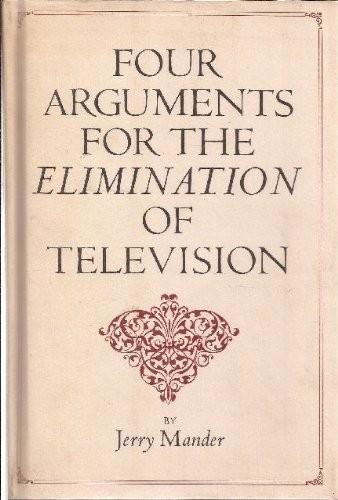
Four Arguments for the Elimination of Television
by
Jerry Mander
Published 1 Jan 1977
We could not build such a plant, nor could we make personal use of its output, nor handle or store the radioactive waste products which remain dangerous to life for thousands of years. The wastes, in turn, determine that future societies will have to maintain a technological capacity to deal with the problem, and the military capability to protect the wastes. So the existence of the technology determines many aspects of the society. If you accept mass production, you accept that a small num- ber of people will supervise the daily existence of a much larger number of people. You accept that human beings will spend long hours, every day, engaged in repetitive work, while sup- pressing any desires for experience or activity beyond this work.
…
No person who did not wish to dominate others would choose to use advertising, or choosing it, succeed in it. So the basic nature of advertising and all technologies created to serve it will be consistent with this purpose, will en- courage this behavior in society, and will tend to push social evolution in this direction. In all of these instances, the basic form of the institution and the technology determines its interaction with the world, the way it will be used, the kind of people who use it, and to what ends. And so it is with television. Far from being "neutral," television itself predetermines who shall use it, how they will use it, what effects it will have on individual lives, and, if it continues to be widely used, what sorts of political forms will inevitably emerge.
…
Why does banning such a technology seem bizarre? One answer to this question lies with the absolutely errone- ous assumption that technologies are "neutral," benign instru- ments that may be used we11 or badly depending upon who controls them. Americans have not grasped the fact that many technologies determine their own use, their own effects, and even the kind of people who control them. We have not yet learned to think of technology as having ideology built into its very form. A second explanation is that once any technology of a certain scale is introduced, it effectively becomes the environ- ment of our awareness.

The Cultural Logic of Computation
by
David Golumbia
Published 31 Mar 2009
Politically, the goal of this study is to expand on a cultural opening that generally has been discounted in public discourse. In today’s left, political analysis of computation largely focuses on one of two political possibilities. The first, expressed in liberal writings like those of Joseph Trippi and Markos Moulitsas, comes close to a kind of technological determinism: it suggests that the Internet is inherently democratizing, and we simply need to have faith that global computerization will produce democracy as a necessary side-effect. Trusting that the computer makes our political efforts qualitatively different from earlier ones, advocates of this position suggest that computer-based tools for fundraising, organizing, and citizen journalism will have a transformative effect on the public sphere: because the old media conglomerates will inevitably dissolve in the face of ubiquitous Internet access, we need do little more than use the computational tools engineers provide for us—as well as, no doubt, creating a few of our own—to effect significant, anti-authoritarian political change.
…
Exactly as its presumptuous subtitle implies, Friedman’s book outlines a series of cultural-economic changes whose shape can only be dimly glimpsed today, a messianic vision in which the “essential impact of all the technological changes coming together today” is that “people can plug, play, compete, connect, and collaborate with more equal power than ever before” (x). While the overt topic of Friedman’s book is social change, its substance is almost exclusively technological, and it evinces everywhere a profound technological determinism, simply arguing that inevitable technological changes lead inextricably to social changes of a radical and egalitarian sort. Friedman suggests that what he calls “Globalization 1.0 and 2.0 were driven primarily by European and American individuals and businesses. . . . Because it is flattening and shrinking the world, Globalization 3.0 is going to be more and more driven not only by individuals but also by a much more diverse—non-Western, non-White—group of individuals.
…
Among the only discourses of critical thought about computers today has to do with surveillance; we are repeatedly warned, and rightly so, that The Cultural Logic of Computation p 152 computational tools “increase surveillance” in society and increase the sense in which average citizens typically feel (and, in fact, are) watched. This worry is correct in so far as it goes, but it still neutralizes computation by viewing it as an instrument that carries with it certain mechanically produced effects: it remains a kind of technological determinism. The problem we still avoid in these discussions is not technological but social and political: there are powers at work in society that want to watch the mass of the citizenry, and that seek to control social movements via such surveillance. If we had no worries about this political power we would worry much less about the means available to it; if we knew that we could in fact supervise our own government via democratic control, it seems clear we would worry far less about the clandestine surveillance and political manipulation secretive organizations like the CIA have undertaken even before the wide spread of computers.

A Short History of Progress
by
Ronald Wright
Published 2 Jan 2004
(as early as China did), yet never developed a full-blown civilization.40 The Incas of Peru, where metalworking had begun about 1500 B.C., created one of the world’s largest and most closely administered empires, yet may have done so without writing as we know it (though evidence is growing that their quipu system was indeed a form of script).41 Japan made pottery long before anyone else — more than 12,000 years ago — but rice farming and full civilization did not appear there for another 10,000 years, adopted wholesale from China and Korea. The Japanese didn’t begin to work bronze until 500 B.C., but became famous for steel swords by the sixteenth century. At that time they acquired European firearms, then abandoned them for 300 years. We should therefore be wary of technological determinism, for it tends to underestimate cultural factors and reduce complex questions of human adaptation to a simplistic “We’re the winners of history, so why didn’t others do what we did?” We call agriculture and civilization “inventions” or “experiments” because that is how they look to hindsight.
…
H., 15, 135n20 rulers, see kings Rwanda, 185n64 salt and soil, 77, 78, 79, 157n62 science and religion, collision, 10 science fiction, 122 scientific method, 10 Scientific Romance, A (Wright), 83, 122–23 scientific romances, 119, 122 Second World War, 121 Secret Agent, The (Conrad), 120, 147n47 sheep, 43, 159n9 slavery, 71, 114 smallpox, 50, 112, 116–17 social Darwinism, 130, 186n70 social safety net, 127, 183n60 social structure, see classes; “pyramids,” social Solon, 87 Soros, George, 129 Soviet Union, 6 Spanish conquests, 86, 112, 174n15 spearthrower, 141n13 speech, 13, 135n19 Steinbeck, John, 124 stock market, 129 Sumerians, 33, 65–79, 82, 83 blind to impact on nature, 87 city-states, 68, 70 classes, 71 collapse, 83, 158n3 emergence of civilization, 33, 149n1 environment, 67–68, 74–75 floods, 74–77, 156n55, 156n56 human sacrifice, 71–73 irrigation and effects, 68, 77–79 kingship, 70–73 population, 68, 154n38, 157n2 priesthood, 69, 70 slaves, 71 temple prostitution, 70, 154n35 trade, 69 writing, 69–70 ziggurats, 69, 153n32 Tainter, Joseph, 92, 107, 125, 128, 181n52 Tattersall, Ian, 38 technological determinism, 47 technology concerns, 122, 182n54 early machinery, 177n28 as measure of progress, 4–7, 46–47 temple prostitution, 70, 154n35 Teotihuacan, 95, 163n38 terrorism, 49, 126, 147n47 Tikal, 95–96, 97, 98, 99, 100, 105, 165n49, 167n55 Time Machine, The (Wells), 120, 121 Tiwanaku, 94, 163n36, 166n52 towns and villages, Neolithic, 48–49 trade China with Rome, 104, 170n75 Sumerians, 69 trees, 59–60, 86, 185n67 United Nations, 128 United States deficits, 186n69 hostility to conservation, 124, 129–30, 181n49 imperial expansion, 86, 159n7 Ur, 78, 79, 154n38 urban sprawl, 126 Uruk, 67, 70, 79 Ussher, Archbishop, 11 Utnapishtim, 75–77, 156n56 Utopia (More), 115–16 Victorian ideal of progress, 3 violence, 33–34, 71–73, 126, 139n5, 140n6 Waiting for the Barbarians (Coetzee), 71, 122 War of the Worlds, The (Wells), 117, 178n35 warfare, 33–34, 48–49, 121 early humans, 24–26 twentieth century, 121, 180n43 waste, 125 weapons, 5–6, 29, 31, 121, 179n41 of early humans, 36, 141n13 Webster, David, 100, 101, 145n39 Wells, H.

Boom: Bubbles and the End of Stagnation
by
Byrne Hobart
and
Tobias Huber
Published 29 Oct 2024
They synthesize deterministic collectivism—the infamous wisdom or madness of crowds—and the hyper-individualism that manifests, for example, in the cult of founders in Silicon Valley. Put a little differently: Bubbles are simultaneously technologically deterministic and socially constructivist in nature. They only work if the new product is physically possible, but they also rely on discrete choices by specific people. An extreme form of technological determinism ascribes agency to technology and conceives of it as a quasi-autonomous process that, following an internal logic, controls the historical evolution of our techno-social systems. 335 Heidegger referred to this inhuman dimension of technology as the “uncanny,” asserting that no one, “no single man… can brake or direct the progress of history in the atomic age” because the forces of technology “everywhere and every minute claim, enchain, drag along, press and impose upon man under the form of some technical contrivance or other.” 336 In contrast, extreme versions of social constructivism hold that the development of technology is exclusively determined by its social context, human agency, and historical contingencies.
…
An extreme form of technological determinism ascribes agency to technology and conceives of it as a quasi-autonomous process that, following an internal logic, controls the historical evolution of our techno-social systems. 335 Heidegger referred to this inhuman dimension of technology as the “uncanny,” asserting that no one, “no single man… can brake or direct the progress of history in the atomic age” because the forces of technology “everywhere and every minute claim, enchain, drag along, press and impose upon man under the form of some technical contrivance or other.” 336 In contrast, extreme versions of social constructivism hold that the development of technology is exclusively determined by its social context, human agency, and historical contingencies. Both views offer valuable insights into the nature of technological innovation. But both fail to fully capture the dynamics of technological change, because innovation unfolds at different scales. Technological determinism makes the mistake of suppressing agency. For example, singularitarianism—the techno-optimist view of runaway progress in AI—and technological doomerism—the belief that technological progress will inevitably result in civilizational or environmental collapse 337—both mistakenly assume that progress is an inevitable and automatic process and fail to recognize the role of human agency in technological innovation.
…
While there may be “uncanny” forces of technology beyond our will and “capacity for decision,” 338 the dynamics of technological progress can be shaped and altered by high-agency individuals. Satoshi Nakamoto and Elon Musk provide especially remarkable recent examples of thymotic agency. The model of technological progress we’ve outlined in this book attempts to circumvent the Scylla of technological determinism and the Charybdis of social constructivism by integrating both the individualistic and deterministic dimensions of bubbles and technological innovation. As Part II shows, in the case of multileveled and nonlinear emergent phenomena such as bubbles, certain recurring patterns, waves, or cycles emerge only at larger scales of analysis that may be hard to detect at smaller scales, and vice versa.
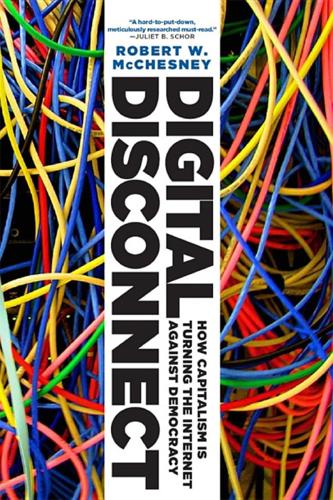
Digital Disconnect: How Capitalism Is Turning the Internet Against Democracy
by
Robert W. McChesney
Published 5 Mar 2013
Neil Postman, Amusing Ourselves to Death: Public Discourse in the Age of Show Business (New York: Penguin, 1985). 13. Nicholas Carr, The Shallows: What the Internet Is Doing to Our Brains (New York: W.W. Norton, 2010), 45. 14. For a series of important essays on technological determinism, see Merritt Roe Smith and Leo Marx, eds., Does Technology Drive History? The Dilemma of Technological Determinism (Cambridge, MA: MIT Press, 1995). 15. Harold A. Innis, Changing Concepts of Time (Toronto: University of Toronto Press, 1952), 15. 16. Neil Postman, Technopoly: The Surrender of Culture to Technology (New York: Knopf, 1992), 170. 17.
…
The dominant media technology defines a society, he said, changing the very way we think and the way that human societies operate.11 His work was very influential on innumerable thinkers, including Neil Postman, who argued that television had an innate bias toward superficiality.12 “Every intellectual technology,” as Nicholas Carr puts it, “embodies an intellectual ethic, a set of assumptions about how the human mind works or should work.” These technologies “have the greatest and most lasting power over what and how we think.”13 Without a political economic context, this approach can smack of media technological determinism, but with the PEC this approach highlights that media technologies have significant impact, an extra-large helping of what sociologists term “relative autonomy.”14 Innis did not only focus upon the importance of communication technologies; he was also a sharp critic of corporate media and media commercialization.15 The same was true of Postman, who termed the United States a technopoly, “a system in which technology of every kind is cheerfully granted sovereignty over social institutions and national life, and becomes self-justifying, self-perpetuating, and omnipresent.”

Basic Income And The Left
by
henningmeyer
Published 16 May 2018
Like all simple ideas, however, things get more complicated on closer scrutiny. For decades there have been jeremiads predicting that workers would be replaced by robots and unemployment would spiral. They have been wrong, and wrong for an important reason: the level of employment is socially, not technologically, determined. Keynes envisaged a possible society where leisure would be widespread because much more highly productive labour was shared and minimised, not corralled by 60 61 some. Short of that, Keynesian demand-manage‐ ment ensured the steady post-war boom western Something For Something Europe enjoyed.

Paper Knowledge: Toward a Media History of Documents
by
Lisa Gitelman
Published 26 Mar 2014
Paula McDowell, “Mediating Media Past and Present: Toward a Genealogy of ‘Print Culture’ and ‘Oral Tradition,’ ” in This Is Enlightenment, ed. Clifford Siskin and William Warner (Chicago: University of Chicago Press, 2010), 231–32. “Soft” determinism is explored in Merritt Roe Smith and Leo Marx, eds., Does Technology Drive History? The Dilemma of Technological Determinism (Cambridge, MA: mit Press, 1994). 32. Adrian Johns, The Nature of the Book: Print and Knowledge in the Making (Chicago: University of Chicago Press, 1998), 35. 33. Warner, The Letters of the Republic, 31, xiv. 34. Raymond Williams, Keywords: A Vocabulary of Culture and Society, rev. ed. (New York: Oxford University Press, 1985), 92. 35.
…
Conditions for Criticism: Authority, Knowledge, and Literature in the Late Nineteenth Century. Oxford: Clarendon Press of Oxford University Press, 1991. Smith, Brian Cantwell. On the Origin of Objects. Cambridge, MA: mit Press, 1998. Smith, Merritt Roe, and Leo Marx, eds. Does Technology Drive History? The Dilemma of Technological Determinism. Cambridge MA: mit Press, 1994. Smith, Paul. “Models from the Past: Proto-Photocopy-Lore.” In The Other Print Tradition: Essays on Chapbooks, Broadsides, and Related Ephemera, edited by Cathy Lynn Preston and Michael J. Preston, 183–222. New York: Garland, 1995. Sontag, Susan. On Photography.

After the Gig: How the Sharing Economy Got Hijacked and How to Win It Back
by
Juliet Schor
,
William Attwood-Charles
and
Mehmet Cansoy
Published 15 Mar 2020
While the path from New Communalism to the sharing economy is yet to be fully researched, there is a through line of location, people, and ideology.18 For some, the history of Silicon Valley is a case of genuinely transformative ideas and technologies gone awry. But it’s a more complicated story. From the beginning many believed that the software itself would ensure good outcomes—a strong technological determinism. It’s now clear this view was wrong. Unregulated markets frequently lead to monopolies, particularly in tech.19 The popular equation of democracy and the internet is also fatuous, as recent political events have made clear.20 And in retrospect we can see that entitlement played an important role in solidifying the Californian Ideology.
…
In the 1950s some thought television was fomenting larceny by promoting consumer lifestyles (Schor 1999). 4. Technological change typically engenders both utopian and dystopian predictions, partly because it is often Janus-faced, capable of impacts that are both benign and malign, even simultaneously. The strong version of technological determinism attributes effects largely, or even solely, to the technology itself. A second camp takes the reverse view, arguing that technology is neutral, and the social context in which it is embedded determines outcomes. As I discuss in chapter 6, when Uber arrived in Sweden, it was forced to follow laws for taxi drivers, which ensured decent wages, security and other employment protections, while in the U.S. it called its drivers “independent contractors,” took no responsibility for wage levels, and shifted risk onto its workforce (Söderqvist 2018; Thelen 2018).

How to Fix the Future: Staying Human in the Digital Age
by
Andrew Keen
Published 1 Mar 2018
The digital clock, which seems to proceed at a more accelerated pace than its analog forebear, is already ticking furiously. Unless we act now, we increasingly risk becoming powerless appendages to the new products and platforms of Big Tech corporations. This book, then, is also a call to arms in a culture infected by a creeping (and creepy) technological determinism. And it’s a reminder that our own human agency—our timeless responsibility to shape our own societies—is essential if we are to build a habitable digital future. In contrast with smart cars, the future will never be able to drive itself. None of us, not even the Antichrist of Silicon Valley, have superhuman powers.
…
“Yes, you will die,” the slave reminded the Roman hero. “But until then, remember you’re a man.” In pagan Rome, then, that skull was as much a symbol of life as of death. It was a reminder to cultivate the civic self and to make oneself useful in public affairs while one still had the chance. In contrast with the technological determinism of Moore’s Law, this law of More’s refers to our duty to make the world a better place. In Utopia too, there is much talk of the “duty” we ought to have to our community. “All laws are promulgated for this end,” More writes, “that every man may know his duty.” More’s Law, then, is Thomas More’s definition of what it should mean to be a responsible human being.

A Hacker's Mind: How the Powerful Bend Society's Rules, and How to Bend Them Back
by
Bruce Schneier
Published 7 Feb 2023
GOVERNANCE SYSTEMS FOR HACKING 245AI technologists and industry leaders: Nick Grossman (8 Apr 2015), “Regulation, the internet way,” Data-Smart City Solutions, Harvard University, https://datasmart.ash.harvard.edu/news/article/white-paper-regulation-the-internet-way-660. 246The Collingridge dilemma: Adam Thierer (16 Aug 2018), “The pacing problem, the Collingridge dilemma and technological determinism,” Technology Liberation Front, https://techliberation.com/2018/08/16/the-pacing-problem-the-collingridge-dilemma-technological-determinism. 247its processes and rulings: Stephan Grimmelikhuijsen et al. (Jan 2021), “Can decision transparency increase citizen trust in regulatory agencies? Evidence from a representative survey experiment,” Regulation and Governance 15, no. 1, https://onlinelibrary.wiley.com/doi/full/10.1111/rego.12278. 248Gillian Hadfield: Gillian K.

The Wealth of Networks: How Social Production Transforms Markets and Freedom
by
Yochai Benkler
Published 14 May 2006
Liberal political theory must first recognize and understand it before it can begin to renegotiate its agenda for the liberal state, progressive or otherwise. 44 The Role of Technology in Human Affairs 45 The first methodological choice concerns how one should treat the role of technology in the development of human affairs. The kind of technological determinism that typified Lewis Mumford, or, specifically in the area of communications, Marshall McLuhan, is widely perceived in academia today [pg 17] as being too deterministic, though perhaps not so in popular culture. The contemporary effort to offer more nuanced, institution-based, and politicalchoice-based explanations is perhaps best typified by Paul Starr's recent and excellent work on the creation of the media.
…
Different technologies make different kinds of human action and interaction easier or harder to perform. All other things being equal, things that are easier to do are more likely to be done, and things that are harder to do are less likely to be done. All other things are never equal. That is why technological determinism in the strict sense--if you have technology "t," you should expect social structure or relation "s" to emerge--is false. Ocean navigation had a different adoption and use when introduced in states whose land empire ambitions were effectively countered by strong neighbors--like Spain and Portugal--than in nations that were focused on building a vast inland empire, like China.
…
On the background of that dominant role, the possibility that a radically different form of information production will emerge--decentralized; socially, no less than commercially, driven; and as diverse as human thought itself--offers the promise of a deep change in how we see the world [pg 34] around us, how we come to know about it and evaluate it, and how we are capable of communicating with others about what we know, believe, and plan. 76 This part of the book is dedicated to explaining the technological-economic transformation that is making these practices possible. Not because economics drives all; not because technology determines the way society or communication go; but because it is the technological shock, combined with the economic sustainability of the emerging social practices, that creates the new set of social and political opportunities that are the subject of this book. By working out the economics of these practices, we can understand the economic parameters within which practical political imagination and fulfillment can operate in the digitally networked environment.

The Rise of the Network Society
by
Manuel Castells
Published 31 Aug 1996
Of course, technology does not determine society.2 Nor does society script the course of technological change, since many factors, including individual inventiveness and entrepreneurialism, intervene in the process of scientific discovery, technological innovation, and social applications, so that the final outcome depends on a complex pattern of interaction.3 Indeed, the dilemma of technological determinism is probably a false problem,4 since technology is society, and society cannot be understood or represented without its technological tools.5 Thus, when in the 1970s a new technological paradigm, organized around information technology, came to be constituted, mainly in the United States (see chapter 1), it was a specific segment of American society, in interaction with the global economy and with world geopolitics, that materialized into a new way of producing, communicating, managing, and living.
…
But nor does society determine technological innovation: it uses it. This dialectical interaction between society and technology is present in the works of the best historians, such as Fernand Braudel. 4 Classic historian of technology Melvin Kranzberg has forcefully argued against the false dilemma of technological determinism. See, for instance, Kranzberg’s (1992) acceptance speech of the award of honorary membership in NASTS. 5 Bijker et al. (1987). 6 There is still to be written a fascinating social history of the values and personal views of some of the key innovators of the 1970s’ Silicon Valley revolution in computer technologies.
…
Both space and time are being transformed under the combined effect of the information technology paradigm, and of social forms and processes induced by the current process of historical change, as presented in this book. However, the actual profile of this transformation sharply departs from common-sense extrapolations of technological determinism. For instance, it appears to be obvious that advanced telecommunications would make location of offices ubiquitous, thus enabling corporate headquarters to quit expensive, congested, and unpleasant central business districts for custom-made sites in beautiful spots around the world. Yet Mitchell Moss’s empirical analysis of the impact of telecommunications on Manhattan’s business in the 1980s found that these new, advanced telecommunications facilities were among the factors responsible for slowing down corporate relocation away from New York, for reasons that I shall expose below.

Possible Minds: Twenty-Five Ways of Looking at AI
by
John Brockman
Published 19 Feb 2019
The possibility that machines threaten a new fascism must be weighed against the vigor of the liberal ideas, institutions, and norms that Wiener championed throughout the book. The flaw in today’s dystopian prophecies is that they disregard the existence of these norms and institutions, or drastically underestimate their causal potency. The result is a technological determinism whose dark predictions are repeatedly refuted by the course of events. The numbers “1984” and “2001” are good reminders. I will consider two examples. Tech prophets often warn of a “surveillance state” in which a government empowered by technology will monitor and interpret all private communications, allowing it to detect dissent and subversion as it arises and make resistance to state power futile.
…
The other focus of much tech prophecy today is artificial intelligence, whether in the original sci-fi dystopia of computers running amok and enslaving us in an unstoppable quest for domination or the newer version, in which they subjugate us by accident, single-mindedly seeking some goal we give them regardless of its side effects on human welfare (the value-alignment problem adumbrated by Wiener). Here again both threats strike me as chimerical, growing from a narrow technological determinism that neglects the networks of information and control in an intelligent system, like a computer or a brain, and in a society as a whole. The subjugation fear is based on a muzzy conception of intelligence that owes more to the Great Chain of Being and a Nietzschean will to power than to a Wienerian analysis of intelligence and purpose in terms of information, computation, and control.

Modern Monopolies: What It Takes to Dominate the 21st Century Economy
by
Alex Moazed
and
Nicholas L. Johnson
Published 30 May 2016
Examples include a Roman marketplace, an ancient auction house, a bazaar, or, more recently, the Yellow Pages, classified ads, or a shopping mall. However, the reason that platforms matter today has everything to do with technology. To be clear, we’re not advocating technological determinism, which assumes that technology determines the development of social structures, economic activities, and cultural values. This idea is the essence of Marshall McLuhan’s famous phrase, “The medium is the message”—that the technology used to achieve something has more meaning than what you do with it. Although this notion certainly carries a grain of truth, it ignores the role that human actions and desires play in shaping how technologies develop and are used.
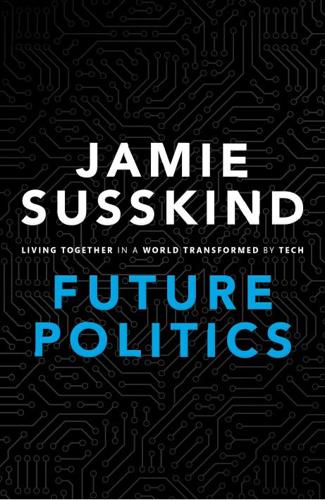
Future Politics: Living Together in a World Transformed by Tech
by
Jamie Susskind
Published 3 Sep 2018
Benkler, Wealth of Networks, 30. 51. Kevin Kelly, What Technology Wants (New York: Penguin, 2010), 191–2. 52. Vladimir Ilyich Lenin, ‘Notes on Electrification’, February 1921, reprinted (1977) in Collected Works, Vol. 42 (Moscow:Progress Publishers): 280–1, cited in Sally Wyatt, ‘Technological Determinism is Dead; Long Live Technological Determinism’, in Philosophy of Technology, 458. 53. Leon Trotsky, ‘What is National Socialism?’ Marxists, last modified 25 April 2007 <https://www.marxists.org/archive/trotsky/germany/ 1933/330610.htm> (accessed 28 November 2017). 54. Nadia Judith Enchassi and CNN Wire, ‘New Zealand Passport Robot Thinks This Asian Man’s Eyes Are Closed’, KFOR, 11 December 2016 <http://kfor.com/2016/12/11/new-zealand-passport-robotthinks-this-asian-mans-eyes-are-closed/> (accessed 2 December 2017). 55.
…
Smith, Mat. ‘Ralph Lauren Made a Great Fitness Shirt that Also Happens to Be “Smart”’. Engadget, 18 Mar. 2016 <https://www.engadget.com/ 2016/03/18/ralph-lauren-polotech-review/> (accessed 6 Dec. 2017). Smith, Merritt Roe, and Leo Marx, eds. Does Technology Drive History? The Dilemma of Technological Determinism. Cambridge, Mass: MIT Press, 1994. Solon, Olivia. ‘World’s Largest Hedge Fund to Replace Managers with Artificial Intelligence’. The Guardian, 22 Dec. 2016 <https://www. theguardian.com/technology/2016/dec/22/bridgewater-associatesai-artificial-intelligence-management> (accessed 1 Dec. 2017).
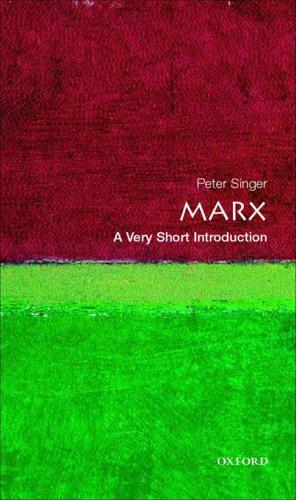
Marx: A Very Short Introduction
by
Peter Singer
Published 15 Mar 2000
To balance the Hegelian emphasis of these works, G. A. Cohen’s Karl Marx’s Theory of History: A Defence (Oxford University Press, Oxford, 1979) argues brilliantly for a more old-fashioned interpretation of Marxism as a scientific theory of history, an interpretation often known – disparagingly – as ‘technological determinism’. Melvin Rader’s Marx’s Interpretation of History (Oxford University Press, New York, 1979) presents a wider range of possible interpretations. Finally, those interested in the entire sweep of Marxist theory, from the founders through its ‘Golden Age’ to its dissolution into Soviet ideology, should not miss Main Currents of Marxism by Lemek Kolakowski (3 vols, Oxford University Press, Oxford, 1978).

Driverless Cars: On a Road to Nowhere
by
Christian Wolmar
Published 18 Jan 2018
There were no ‘driverless taxis’ coasting round Pittsburgh; nor where there autonomous Nissan Leafs parading on the streets of Oxford or on the highways of Mountain View. The technology companies and auto manufacturers are reluctant to describe precisely what their products are able to do but it certainly does not match the media headlines. The world of autonomous cars is one of hype, secrecy and technological determinism that has so far not been challenged. The Evening Standard was in fact rather atypical in that it did raise some crucial issues about employment and the problems with technology, and it expressed doubts about the feasibility of the concept. However, it failed to say that the Nissan Leaf would in fact be confined to a test track and a limit of 12 miles per hour, or that it would always have a person in the driving seat.
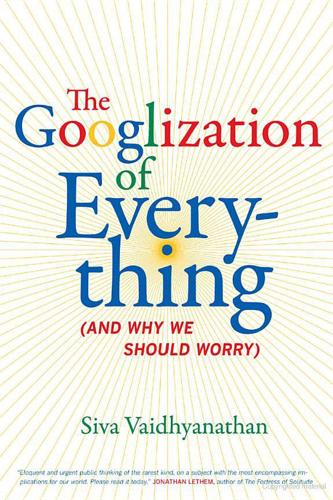
The Googlization of Everything:
by
Siva Vaidhyanathan
Published 1 Jan 2010
Overusing or abusing any tool or technique can leave you numb or foggy. So it’s not surprising that people report increased distraction in their lives after adopting technologies that have raised our cultural metabolism. But in making too strong a claim for deep, biological change effected by technology, Carr commits the error of technological determinism. A year after Carr’s article, the futurist Jamais Cascio wrote a rejoinder of sorts. Cascio claimed that electronic media are among the great technological advances that we humans now use to simulate evolution. Instead of relying on the slow winnowing power of natural selection and reproductive advantage, we now invent things that help us deal with life.
…
Cascio assumes that technologies lead us to something certain: the future is already 182 TH E G OOGL IZATION OF MEMORY determined, and he knows what it will look like. He is, after all, a futurist by trade. He assumes that technologies drive our abilities and desires, instead of the other way around or, more accurately, in concert with us. According to Cascio’s brand of technological determinism, we are always getting better, always rising, never polluting our world or poisoning or fattening or numbing ourselves into submission. Cascio hints at one of the more profound and potentially disturbing changes to our lives that Google has wrought. When he argues that our filters should and will be stronger, that we may soon resign our powers to edit and ignore to an algorithm, he is flashing on some real and alarming changes that Google has been implementing in its systems of late.
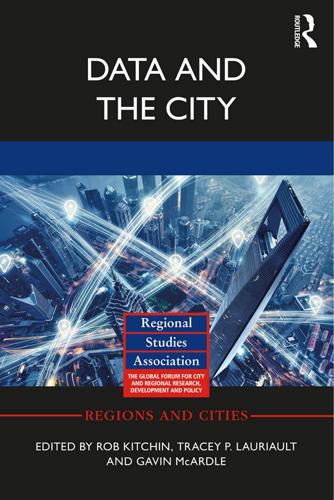
Data and the City
by
Rob Kitchin,Tracey P. Lauriault,Gavin McArdle
Published 2 Aug 2017
Hacking, I. (2007) ‘Kinds of people, moving targets’, British Academy lecture, read at the Academy, 11 April 2006, available from: www.britac.ac.uk/sites/default/files/hackingdraft.pdf [accessed 19 January 2017]. Hughes, T.P. (1994) ‘Technological momentum’, in M.R. Smith and L. Marx (eds), Does Technology Drive History? The Dilemma of Technological Determinism. Cambridge, MA: MIT Press, pp. 101–114. Hughes, T.P. (2004) Human-Built World: How to Think About Technology and Culture. Chicago, IL: University of Chicago Press. Kitchin, R. (2011) ‘The programmable city’, Environment and Planning B 38: 945–951. Kitchin, R. (2014) The Data Revolution. London: SAGE.
…
This is different from dominant conceptions of online versus offline worlds. The difference is exemplified in how the role of social media has been interpreted in relation to protests, uprisings and occupations staged in cities. Christian Fuchs (2014), for example, outlines four ways the role has been interpreted – from social media as technological determinants, to their having no impact, or to being just ‘useful’. Instead he offers a fourth interpretation, that the subjects of these events had already been formed into social groups able to recognize each other and it is that formation and recognition that enabled them to mobilize each other for action through social media.

The Hacker Crackdown
by
Bruce Sterling
Published 15 Mar 1992
As a final clincher, their Mountie friends in Canada (and colleagues in Ireland and Taiwan) don't have First Amendment or American constitutional restrictions, but they do have phone lines, and can call any bulletin board in America whenever they please. The same technological determinants that play into the hands of hackers, phone phreaks and software pirates can play into the hands of police. "Technological determinants" don't have ANY human allegiances. They're not black or white, or Establishment or Underground, or pro-or-anti anything. Godwin complained at length about what he called "the Clever Hobbyist hypothesis" —the assumption that the "hacker" you're busting is clearly a technical genius, and must therefore by searched with extreme thoroughness.

The Computer Boys Take Over: Computers, Programmers, and the Politics of Technical Expertise
by
Nathan L. Ensmenger
Published 31 Jul 2010
Once the electronic computer had embarked on its seemingly inexorable march toward Moore’s law—toward ever-smaller, faster, and more affordable computing power—the eventual “computerization” of all of society was both desirable and inevitable. This focus on the invention and perfection of the technology of electronic computing makes for a clear and compelling narrative, and provides a straightforward and largely technologically determined explanation for the emergence of the electronic computer as the defining technology of the modern era. In doing so, however, it downplays or disregards the contributions of the majority of the computer people. Whatever it is that they really do, the typical computer specialist has almost nothing to do with either the design or construction of actual computers.
…
It is a rare article on software engineering that does not make at least a token reference to the ongoing crisis. The legacy of the past continues to shape the possibilities of the future. Computing as a Human Activity It is tempting, from the vantage point of the early twenty-first century, to view the widespread adoption of the electronic computer as an uncomplicated and technologically determined process, driven by the growing informational demands of modern scientific, corporate, and governmental organizations along with the obvious superiority of the general-purpose, programmable digital computer as a tool for managing and manipulating information. Indeed, from a modern perspective, it is difficult to imagine a more obviously useful and desirable technology.

Free Speech: Ten Principles for a Connected World
by
Timothy Garton Ash
Published 23 May 2016
Martin Luther said printing was ‘God’s highest and extremest act of grace’.44 In 1881, Scientific American magazine hailed ‘the moral influence’ of the telegraph.45 ‘The fax will set you free’, the American nuclear strategist Albert Wohlstetter proclaimed in an article published in 1990.46 Equally vaulting claims have been made for the internet: some suggest that it will inevitably produce a heaven of free speech and political liberation, others, a hell of corporate exploitation and totalitarian surveillance. Here is the fallacy of technological determinism. The fax never set anyone free. People set people free. The telegraph, like the printing press, was used to transmit the best and the worst of which humans are capable. But equally, we should not fall for the opposite fallacy: that technologies are entirely neutral. Rather, they possess what have been called affordances.47 New technologies afford possibilities that were not there before, or not in the same degree.
…
It would be wrong morally: we should fight for what we believe is right even if the odds seem hopelessly stacked against us. But it would also be wrong analytically. To conclude that we are powerless in these transformed circumstances is to misunderstand our own position. While we should always beware the technological determinism and visionary overstatement of ‘the internet will set you free’, the internet does afford new possibilities for individuals to broadcast, connect and organise. As I observed at the beginning of this book, most of us can now be authors, journalists and publishers. At relatively small expense, we can broadcast ourselves, in words, images or sounds that are theoretically accessible to billions of other human beings.
…
He went on to write a book called Computer Power and Human Reason which argued that the limits to what we expect of computers should be ethical rather than technological or mathematical: ‘since we do not now have any ways of making computers wise, we ought not now to give computers tasks that demand wisdom’.90 In the meantime, there has emerged a small school of cybersceptics, reacting against the cyberutopianism of Silicon Valley and the technological determinism that often underpins it. There is, they point out, a vast ocean of rubbish, nonsense and lies online. (A similar complaint was made after the spread of printing in sixteenth-century Europe.) Nicholas Carr and Andrew Keen deplore the online ‘cult of the amateur’, which inordinately privileges mass participation over authority, openness over expertise, Wikipedia over Britannica.91 And the former, they argue, is eroding the latter.
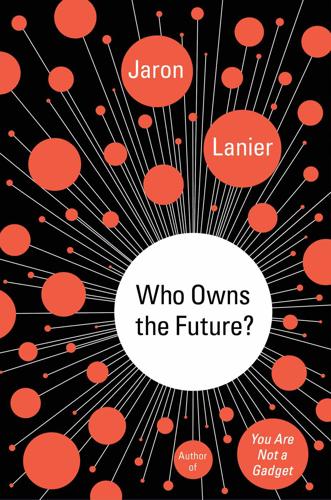
Who Owns the Future?
by
Jaron Lanier
Published 6 May 2013
Everything is becoming more and more software-mediated, physicality is becoming more mutable by technology, and reality is being optimized. I have criticized aspects of our narrative, but no one can say it doesn’t have direction. The problem with it is that humans aren’t the heroes. People might merge with machines and become immortal, but that’s a sideshow. The dominant story is machine-centric. It’s technological determinism. My view is that people are still the actors. Technology is not really autonomous. People act in the network age either by struggling to get close to top Siren Servers in order to enjoy power and wealth, or by doing something other than that and falling into relative poverty and irrelevance.
…
The difference is that I think these things are done by researchers, of whom I am but one. I do not think the technology is creating itself. It’s not an autonomous process. It’s something we humans do. Of course, you can always play with figure-ground reversals, as we saw earlier with the Golden Goblet. The reason to believe in human agency over technological determinism is that you can then have an economy where people earn their own way and invent their own lives. If you structure a society on not emphasizing individual human agency, it’s the same thing operationally as denying people clout, dignity, and self-determination. So, in an absolute sense, there’s no way to prove that the Singularity would be the wrong way to interpret certain future events.

Distrust That Particular Flavor
by
William Gibson
Published 3 Jan 2012
Some futurists, looking at the individual musician’s role in the realm of the digital, have suggested that we are in fact heading for a new version of the previous situation, one in which patronage (likely corporate, and nonprofit) will eventually become a musician’s only potential ticket to relative fame and wealth. The window, then, in which one could become the Beatles, occupy that sort of market position, is seen to have been technologically determined. And technologically finite. The means of production, reproduction, and distribution of recorded music are today entirely digital, and thus are in the hands of whoever might desire them. We get them for free, often without asking for them, as inbuilt peripherals. I bring music up, here, and the impact the digital is having on it, mainly as an example of the unpredictable nature of technologically driven change.

Automation and the Future of Work
by
Aaron Benanav
Published 3 Nov 2020
On this basis, automation theorists often present UBI as a neutral policy instrument—appealing to left and right—that solves the problem of global un- and underemployment, just as the Green Revolution technologies were supposed to solve the problem of global hunger. There is an inner affinity between technological determinism, which is the core of the automation discourse, and its recourse to technocratic solutions. Both positions elide difficult social and political questions by transforming them into putatively objective facts. Such technocratic neutrality is a fantasy: depending on the manner in which it is implemented, UBI will lead in radically different directions, most of which will not bring us closer to a world of human flourishing.27 A critique of the automation discourse’s market-based vision of post-scarcity will help reveal the contours of a nonmarket alternative.
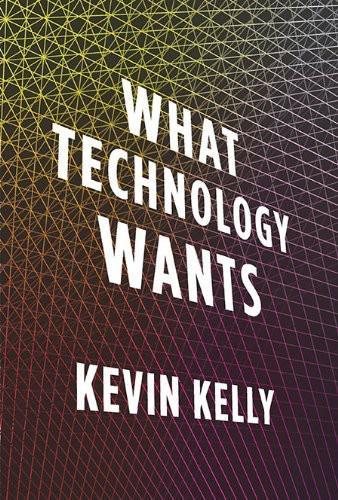
What Technology Wants
by
Kevin Kelly
Published 14 Jul 2010
On the other hand, if technologies really are inevitable, then we have only the illusion of choice, and we should smash all technologies to be free of this spell. I’ll address these central concerns later, but I want to note one curious fact about this last belief. While many people claim to believe the notion of technological determinism is wrong (in either sense of that word), they don’t act that way. No matter what they rationally think about inevitability, in my experience all inventors and creators act as if their own invention and discovery is imminently simultaneous. Every creator, inventor, and discoverer that I have known is rushing their ideas into distribution before someone else does, or they are in a mad hurry to patent before their competition does, or they are dashing to finish their masterpiece before something similar shows up.
…
In this one-volume anthology, Rhodes collects writings about technology written over the past century or so. Critics, poets, inventors, authors, artists, and ordinary citizens present some of the most quotable passages and perspectives on technology. I found all kinds of insights I had not seen elsewhere. Does Technology Drive History? The Dilemma of Technological Determinism. Merritt Roe Smith and Leo Marx, eds. Cambridge: MIT Press, 1994. A fairly scholarly anthology of historians trying to answer this vexing question. The Singularity Is Near. Ray Kurzweil. New York: Viking, 2005. I call this book mythical because I think the Singularity is a brand-new myth for our age.
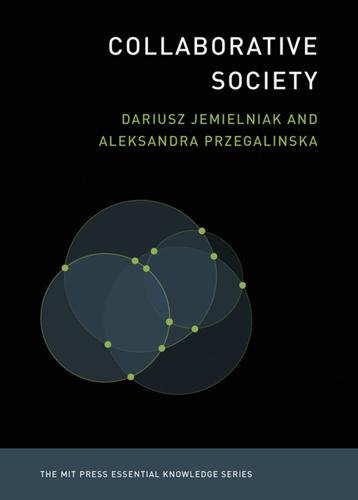
Collaborative Society
by
Dariusz Jemielniak
and
Aleksandra Przegalinska
Published 18 Feb 2020
Sharing economy (also called collaborative economy) A very broad term related to utilizing the idle capacity of different kinds of resources and making them available for free or for profit, usually enabled by technology, and relying on internet platforms connecting strangers and intermediating trust between them. See also unsharing economy Technodeterminism A theory that assumes that a society’s technology determines the development of its social, political, and economic structures as well as its cultural values. It also claims that technology is the main driver of societal change. Unsharing economy The term emphasizes the market-driven aspects of the so-called sharing economy, which leads to reducing the number of actual acts of genuine nonprofit sharing while accommodating and monetizing the idle capacities of different goods and services.
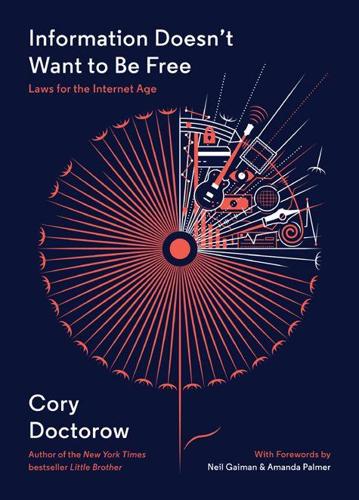
Information Doesn't Want to Be Free: Laws for the Internet Age
by
Cory Doctorow
,
Amanda Palmer
and
Neil Gaiman
Published 18 Nov 2014
When my work is done, I slide it under the door and some bourgeois man of commerce takes it out to the world. What right have you to tell me that in order to earn a living, I must become an itinerant jongleur who capers for others’ amusement?” In both cases, the refuseniks misunderstood how technologically determined their income was. Art is art, whether you make it with a computer-based mixing board or by banging two rocks together. But industry is all about technology. There was once a thriving lamplighting industry—people were paid to walk the streets with long, flaming poles that were used to light the wicks on public streetlamps at dusk.

Terms of Service: Social Media and the Price of Constant Connection
by
Jacob Silverman
Published 17 Mar 2015
Mixing “the freewheeling spirit of the hippies and the entrepreneurial zeal of the yuppies,” the Californian Ideology drew on the state’s history of countercultural rebellion, its role as a crucible of the New Left, the global village prophecies of media theorist Marshall McLuhan, and “a profound faith in the emancipatory potential of the new information technologies.” Survivors of the “Me” decade, weaned on utopian sci-fi novels, self-help, and new-age spiritualism, adherents of this faith forsook the street-side rebellion and civil actions of an earlier generation in favor of “a contradictory mix of technological determinism and libertarian individualism.” Freedom would not be found in the streets but in an “electronic agora”—an open digital marketplace where individuality would be allowed its fullest expression, away from the encumbrances of government and even of the physical world. As Barbrook and Cameron recognized, the Californian Ideology was contradictory, but it also “[derived] its popularity from the very ambiguity of its precepts.”
…
See also Uber tax-type services, 235 tech companies ethics and usefulness of, xiii–xiv gaming social media to subvert shaming, 174 Google Plus profile advice for, 15 Like button as de facto legal agreement, 26–27 and privacy, 285, 287 programs and initiatives for monitoring our activities, 300–301 and sentiment analysis, 37, 38–39 as sovereign authorities of cyberspace, 252–53 surveillance data, 130–32, 138–39, 140, 275 and Zuckerberg’s Law, 288 See also companies; Silicon Valley TechCrunch, 106–7 technological determinism and Libertarian individualism, 1–3 technology overview, xii and busyness, 334–36 and context collapse, 290–92 defenders of status quo, xii–xiii determining course of, xiii–xiv and instantaneous global communication, 3–4 and privacy, in the 1890s, 288–90 revolutionary predictions for, 2–4 and tech-only trap, xi–xii techno-utopians, xi, 19, 313.

The Cigarette: A Political History
by
Sarah Milov
Published 1 Oct 2019
Goldberg, “Legal Aspects of Non-Smokers’ Rights or ‘If We Are Not For Ourselves, Then Who Will Be For Us’ ” in Smoking and Health: Proceedings of the Third World Conference On Smoking and Health (Washington D.C.: United States Department of Health, Education and Welfare, National Institutes of Health, National Cancer Institute, 1976), 366. 11. For the “family farm” mythology that helped to sustain producerism, see Shane Hamilton, “Agribusiness, the Family Farm, and the Politics of Technological Determinism in the Post–World War II United States,” Technology and Culture 55, No. 3 (2014): 560–590. See also Shane Hamilton, Supermarket USA: Food and Power in the Cold War Farms Race (New Haven: Yale University Press, 2018), 144–150. 12. Indeed, agriculture has been a source of much scholarship on the development of the American state.
…
“Resolutions Adopted at the 19th Annual Convention Annual Convention, North Carolina Farm Bureau Federation, Asheville, N.C., November 24, 1954,” Folder 2, Box 16, NCFB Records, NCSU. 139. For more on the expansion of white suburbs, see David Freund, Colored Property: State Policy and White Racial Politics in Suburban America (Chicago: University of Chicago Press, 2007). 140. Shane Hamilton, “Agribusiness, the Family Farm, and the Politics of Technological Determinism in the Post-World War II United States,” Technology and Culture 55, No. 3 (2014): 571. 141. “1968 Policies, Resolutions, and Recommendations: North Carolina Farm Bureau Federation, Greensboro, N.C.,” Folder 3, Box 16, NCFB Records, NCSU. The position of the Farm Bureau resonates with Ira Katznelson’s reinterpretation of New Deal social welfare policies as beneficial to whites at the expense of African Americans—an in-built system of white racial privilege that Katznelson calls “affirmative action for whites.”
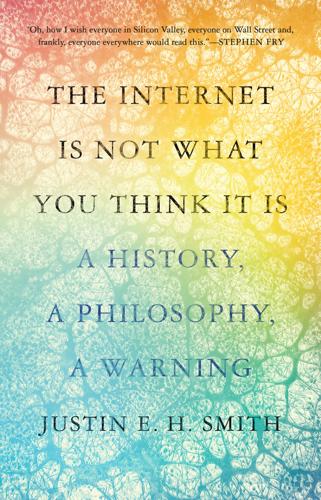
The Internet Is Not What You Think It Is: A History, a Philosophy, a Warning
by
Justin E. H. Smith
Published 22 Mar 2022
Yet like Stanley, and unlike Heidegger or some caricature of the “Luddite,” I am interested here in “eschewing apocalyptic frenzies of doom or salvation in favor of calmer analysis.”5 While strongly opposed to the “technicist mystification of personal consciousness under conditions of modern industrial civilization”6 and concerned to salvage “human dignity” under these conditions,7 I am likewise concerned to show that the greatest problem is not one of unstoppable technological determinism, or of a determinism that can only be countered by “flipping the off switch,” but rather in clarifying the nature of the force with which we are contending, and understanding the limits of thinking that proceeds by analogy between human beings and machines. Stanley’s approach is largely through the analysis of language, while mine is through history, but in both cases the aim is to engage in lucid criticism while avoiding the pitfalls of pessimism or authenticity-mongering
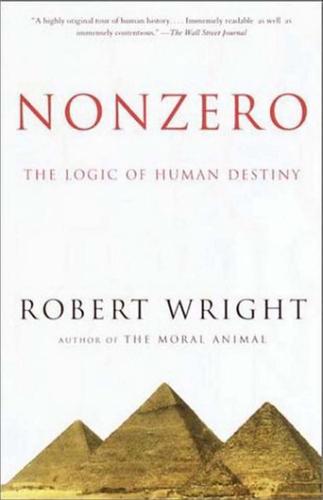
The Moral Animal: Evolutionary Psychology and Everyday Life
by
Robert Wright
Published 1 Jan 1994
But that’s nothing compared to the Ashanti, who sent data hundreds of miles in a few minutes with a network of “talking drums” that could summon political leaders, warn of danger, mobilize the military, announce deaths, or (on a less urgent note) broadcast proverbs. Differences in tone had meaning, as in the Ashanti language itself. This book has made little use of such familiar phrases as the “Stone Age” and the “Bronze Age.” The reason, clearly, is not an aversion to “technological determinism,” but rather a belief that metallurgy makes for a bad version of it. The Maya, the Aztecs, and the Inca were basically Stone Age people—what metal they had was used mainly for jewelry and the like, not words or hields. Yet they had much more in common with Egypt or China in the Bronze Age than with, say, the Stone Age Shoshone of their own hemisphere.
…
Soni (Big Man) South American civilization South Asian Coalition on Child Servitude sovereignty, loss of Spencer, Herbert Stalin, Joseph standard of living Starr, Chester state-level societies core criteria of statehood writing and Stewart, Potter stock exchanges Strayer, Joseph subsidy power Sumerian writing Sun Tzu superempowered angry man supranational governance: see global governance supranational organizations Szathmáry, Eörs Tahitians Taliban organization Tareumiut Eskimos Tasaday people Tasmanians teaching technological determinism technology: agriculture’s origins and Chinese technological development redistributive effects social instability and technological revolution of Middle Ages warfare and see also specific technologies Teilhard de Chardin, Pierre on future of goodness on global consciousness scientific vision telecasting telegraph technology teleology telephone technology Tennyson, Alfred, Lord Tenochtitlán Teotihuacán textile technology theocracy thermodynamics, second law of “Tit for Tat” program Titus, Roman emperor Toba barbarian confederacy tolerance Toltec civilization tool use, in animals Toynbee, Arnold trade disputes tragedy of the commons transportation, economic development and tribalism benign forms of Jihad vs.
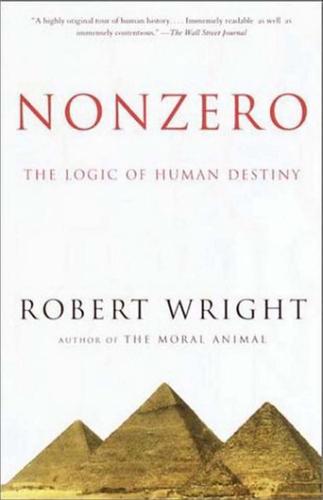
Nonzero: The Logic of Human Destiny
by
Robert Wright
Published 28 Dec 2010
But that’s nothing compared to the Ashanti, who sent data hundreds of miles in a few minutes with a network of “talking drums” that could summon political leaders, warn of danger, mobilize the military, announce deaths, or (on a less urgent note) broadcast proverbs. Differences in tone had meaning, as in the Ashanti language itself. This book has made little use of such familiar phrases as the “Stone Age” and the “Bronze Age.” The reason, clearly, is not an aversion to “technological determinism,” but rather a belief that metallurgy makes for a bad version of it. The Maya, the Aztecs, and the Inca were basically Stone Age people—what metal they had was used mainly for jewelry and the like, not words or hields. Yet they had much more in common with Egypt or China in the Bronze Age than with, say, the Stone Age Shoshone of their own hemisphere.
…
Soni (Big Man) South American civilization South Asian Coalition on Child Servitude sovereignty, loss of Spencer, Herbert Stalin, Joseph standard of living Starr, Chester state-level societies core criteria of statehood writing and Stewart, Potter stock exchanges Strayer, Joseph subsidy power Sumerian writing Sun Tzu superempowered angry man supranational governance: see global governance supranational organizations Szathmáry, Eörs Tahitians Taliban organization Tareumiut Eskimos Tasaday people Tasmanians teaching technological determinism technology: agriculture’s origins and Chinese technological development redistributive effects social instability and technological revolution of Middle Ages warfare and see also specific technologies Teilhard de Chardin, Pierre on future of goodness on global consciousness scientific vision telecasting telegraph technology teleology telephone technology Tennyson, Alfred, Lord Tenochtitlán Teotihuacán textile technology theocracy thermodynamics, second law of “Tit for Tat” program Titus, Roman emperor Toba barbarian confederacy tolerance Toltec civilization tool use, in animals Toynbee, Arnold trade disputes tragedy of the commons transportation, economic development and tribalism benign forms of Jihad vs.

Nexus: A Brief History of Information Networks From the Stone Age to AI
by
Yuval Noah Harari
Published 9 Sep 2024
By 1960, all adult Americans were theoretically eligible to vote, and close to seventy million (about 64 percent of the electorate) actually did so—though millions of Blacks and other disenfranchised groups were prevented from voting through various voter-suppression schemes.57 As always, we should beware of technological determinism and of concluding that the rise of mass media led to the rise of large-scale democracy. Mass media made large-scale democracy possible, rather than inevitable. And it also made possible other types of regimes. In particular, the new information technologies of the modern age opened the door for large-scale totalitarian regimes.
…
How would it feel to be constantly monitored, guided, inspired, or sanctioned by billions of nonhuman entities? How would we have to change in order to adapt, survive, and hopefully even flourish in this startling new world? NO DETERMINISM The most important thing to remember is that technology, in itself, is seldom deterministic. Belief in technological determinism is dangerous because it excuses people of all responsibility. Yes, since human societies are information networks, inventing new information technologies is bound to change society. When people invent printing presses or machine-learning algorithms, it will inevitably lead to a profound social and political revolution.
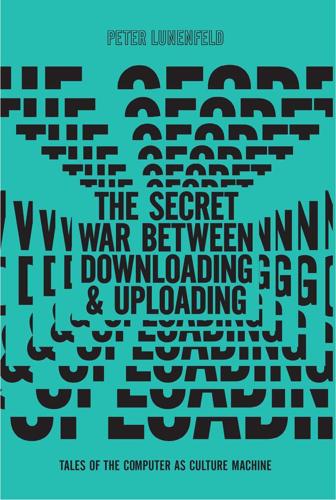
The Secret War Between Downloading and Uploading: Tales of the Computer as Culture Machine
by
Peter Lunenfeld
Published 31 Mar 2011
The heroics of modernism, driven by its own lusts for ground zero, set a higher bar for unimodernism, but that is the challenge for us: to use the computer, which decreases classic notions of running room even further, to reinvent it for the twenty-first century. Revolution has been co-opted by the marketers, on the one side, and fundamentalist death cults, on the other. Technological determinism is not the answer. Technologies certainly open up spaces, but they also close them down. It is hardly 131 CHAPTER 5 as simplistic as the idea that “you can’t stop progress.” Technologies are supported, deployed, and abandoned for a huge, interlocking number of reasons. Some have to do with the technologies’ innate qualities, yet many of them have to do with the economics of dispersal and marketing, timing and political will.

Brave New World of Work
by
Ulrich Beck
Published 15 Jan 2000
Those who try to explain the dynamic of the knowledge society with the assumptions and categories of the old paradigm of work fail to see its real revolutionary potential, which is that it enables different kinds of activity – production, management, application and distribution – to be directly linked up online. In the process, however, the location paradigm of industrial society breaks down and a new diversity of options compels decisions and requires standardization. Consequently, technological determinism is refuted by information technology. The knowledge society develops pluralistically out of itself, varying in a relationship of mutual dependence with the various norms and paths of development in different spheres and societies and against different cultural backgrounds. At the same time, in the knowledge society, distribu-tion of and access to knowledge become a key element of new social inequalities and conflicts.

You Are Not a Gadget
by
Jaron Lanier
Published 12 Jan 2010
The MoveOn network, for instance, which is usually involved in electoral politics, activated its huge membership to complain loudly. Facebook made a quick retreat. The Beacon episode cheered me, and strengthened my sense that people are still able to steer the evolution of the net. It was one good piece of evidence against metahuman technological determinism. The net doesn’t design itself. We design it. But even after the Beacon debacle, the rush to pour money into social networking sites continued without letup. The only hope for social networking sites from a business point of view is for a magic formula to appear in which some method of violating privacy and dignity becomes acceptable.

Working the Phones: Control and Resistance in Call Centres
by
Jamie Woodcock
Published 20 Nov 2016
The telephone is one of a number of technologies – alongside the automobile, the television, the computer and so on – that have had a far-reaching social impact on modern society. Claude S. Fischer argues that the telephone ‘captures most cleanly the magnification of social contact’.23 However, as with other examples of modern technology, there is a danger of falling into technological determinism, particular in a context of advertising and media hype. Technology is not neutral and it emerges in particular social contexts. As Marx and Engels argued, ‘it would be possible to write quite a history of inventions, made since 1830, for the sole purpose of supplying capital with weapons against the revolts of the working class’.

Money and Government: The Past and Future of Economics
by
Robert Skidelsky
Published 13 Nov 2018
In the words of the American economist Thomas Palley: ‘Mainstream economists will assert the conventional story about the profit rate being technologically determined. However, as Piketty occasionally hints, 302 di s t r i bu t ion a s a m ac roe c onom ic p robl e m in reality the profit rate is politically and socially determined by factors influencing the distribution of economic and political power. Growth is also influenced by policy and institutional choices.’39 Similarly, James Galbraith criticized Piketty’s claim that the wage share in national income is technologically determined, leaving governments with scope for intervention only in the post-tax distribution of earnings.
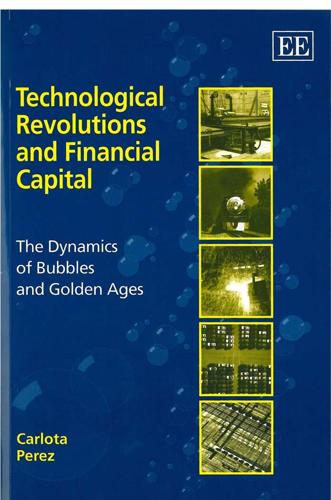
Technological Revolutions and Financial Capital: The Dynamics of Bubbles and Golden Ages
by
Carlota Pérez
Published 1 Jan 2002
In each technological revolution, whether in earlier times with iron, coal, steel, or oil or with chips today, it ix x Technological Revolutions and Financial Capital Preface was possible to make very great economies of scale in the production of these inputs, and frequently such a steep decline in price followed that they became very attractive for economic as well as for purely technical reasons. Finally, she showed up some of the fallacies of what is known to historians as ‘technological determinism’ by her insistence that any transformation in technology could only take place through an interactive and accompanying process of social, political and managerial change. This meant that the change of paradigm affected not only management and organization at the level of the firm but it affected and was affected by the entire system of social and political regulation.
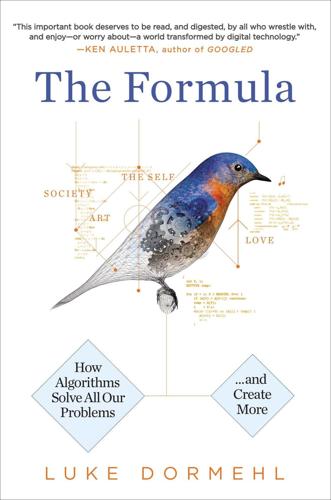
The Formula: How Algorithms Solve All Our Problems-And Create More
by
Luke Dormehl
Published 4 Nov 2014
Founded by Wired magazine editors Gary Wolf and Kevin Kelly in the mid-2000s, the Quantified Self movement casts its aspirations in bold philosophical terms, promising devotees “self-knowledge through numbers.”4 Taking the Positivist view of verification and empiricism, and combining this with a liberal dose of technological determinism, the Quantified Self movement begs the existential question of what kind of self can possibly exist that is unable to be number-crunched using the right algorithms? If Socrates concluded that the unexamined life was not worth living, then a 21st-century update might suggest the same of the unquantified life.
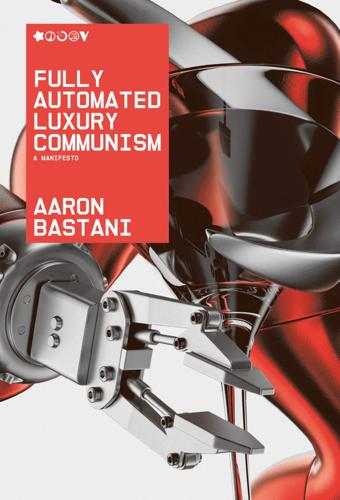
Fully Automated Luxury Communism
by
Aaron Bastani
Published 10 Jun 2019
The technological shift of the First Disruption embodies that law. Cities, culture and writing – themselves the basis for ever more complex forms of social organisation – were shaped by agriculture, the domestication of animals and crops, and a practical understanding of heredity. That is not to say technology determines all paths. Indeed, there is a case to be made that the technologies of the Second Disruption – principally Watt’s steam engine – were merely the final element in the broader transition to capitalism. Here industrial innovation came after centralised states, the emergence of a class of ‘landless labourers’ and certain ideas of private and intellectual property.

Ellul, Jacques-The Technological Society-Vintage Books (1964)
by
Unknown
Published 7 Jun 2012
It is obvious that off such ultimate technical measures must cause the last meager “idealistic* motifs of the whole technical enterprise to disappear. Ellul does not specifically say so, but it seems that he must hold that the technological society, like everything else, bears within itself the seeds of its own destruc tion. It must not be imagined that the autonomous technique en- xviii) visioned by Ellul is a kind of "technological determinism,” to use a phrase of Veblen. It may sometimes seem so, but only because all human institutions, like the motions of all physical bodies, have a certain permanence, or vis inertiae, which makes it highly probable that the near future of statistical aggregations will see them con tinue more or less in the path of the immediate past.
…
At stake is our very life, and we shall need all the energy, inventiveness, imagina tion, goodness, and strength we can muster to triumph in our pre dicament While waiting for the specialists to get on with their work on behalf of society, each of us, in his own life, must seek ways of resisting and transcending technological determinants. Each man must make this effort in every area of life, in his profes sion and in his social, religious, and family relationships. In my conception, freedom is not an immutable fact graven in nature and on the heart of man. It is not inherent in man or in so ciety, and it is meaningless to write it into law.

Bureaucracy
by
David Graeber
Published 3 Feb 2015
As an anthropologist and anarchist, I have to deal fairly regularly with “anticivilizational” types who insist not only that current industrial technology can only lead to capitalist-style oppression, but that this must necessarily be true of any future technology as well: and therefore, that human liberation can only be achieved by a return to the Stone Age. Most of us are not such technological determinists. But ultimately, claims for the present-day inevitability of capitalism have to be based on some kind of technological determinism. And for that very reason, if the ultimate aim of neoliberal capitalism is to create a world where no one believes any other economic system could really work, then it needs to suppress not just any idea of an inevitable redemptive future, but really any radically different technological future at all.
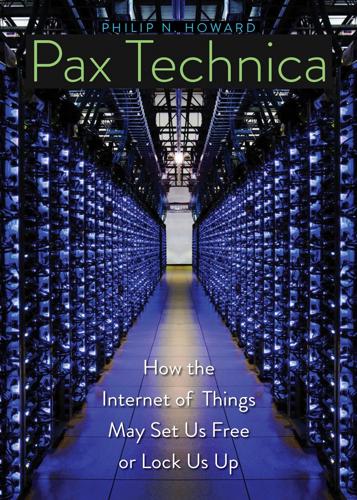
Pax Technica: How the Internet of Things May Set Us Free or Lock Us Up
by
Philip N. Howard
Published 27 Apr 2015
See Internet Governance Forum ignorance, pluralistic, 78 iHUB Research, 103, 160 Ikenberry, John, 12 India: fighting piracy, 98; legal database in, 170; markets in, 123; prostitution in, 103 Indian Kanoon, 170, 201 Indonesia, 81; army control in, 94; corruption in, 96; Islamists moderating message in, 132; online journalism in, 60 industrial espionage, 40 information activism, 162–66 informationalism, 126 information economy, value of, measuring, 55 information infrastructure: battles over, xx–xxi; competition of, 220–23; control of, 56–57, 230; disconnecting of, 134; privatization of, 57; targeting of, 239 information technology: determining political battles, 126–27; export controls on, 252; new world order and, 11–12; sanctions on, 252–53; servicing power, 126; standards setting for, 135, 231–32; substituting for bad governance, 72–73. See also internet of things infrastructure, 107–8; competition over, 228–29; control of, 119–20; flaws in, 237; political power and, 101–2; stability and, 146–47; technological, 119–20 Infrastructure (Frischmann), 243 Innis, Harold, 16 Innu, building collective identity, 145 institution, 70, 296 intellectual property, 154, 166, 214 International Corporation for Assigned Names and Numbers, 13, 33 International Telecommunications Union, 32–33, 164 internet: access to, 46; China building its own, 87, 162, 183, 186–92, 222–23; cognitive liberation and, 78; collective action and, 84–85; democracy linked to, 167–68; desire for, 45; effects of, on society, 219; as empire, 149–53; feudalism of, 63–64; founding of, 112; freedoms for, 234; freedoms of, as a human right, 162–63; governance and, 103–6; government control of, 53, 58–59; national identity and, 144–45; physical structure of, 26–27; planning for, xiii; political roles for, 73, 107–8; regulation of, 163; size of, 2–3, 8–9, 46; as surveillance state, 22–27; transformation of, xix; unhappiness with, xii–xiii; Westphalian, 63.

The Glass Cage: Automation and Us
by
Nicholas Carr
Published 28 Sep 2014
Gross and Ellen Yi-Luen Do, “Ambiguous Intentions: A Paper-like Interface for Creative Design,” in Proceedings of the ACM Symposium on User Interface Software and Technology (New York: ACM, 1996), 183–192. 29.Julie Dorsey et al., “The Mental Canvas: A Tool for Conceptual Architectural Design and Analysis,” in Proceedings of the Pacific Conference on Computer Graphics and Applications (2007), 201–210. 30.William Langewiesche, Fly by Wire: The Geese, the Glide, the “Miracle” on the Hudson (New York: Farrar, Straus & Giroux, 2009), 102. 31.Lee, “Human Factors and Ergonomics.” 32.CBS News, “Faulty Data Misled Pilots in ’09 Air France Crash,” July 5, 2012, cbsnews.com/8301-505263_162-57466644/faulty-data-misled-pilots-in-09-air-france-crash/. 33.Langewiesche, Fly by Wire, 109. 34.Federal Aviation Administration, “NextGen Air Traffic Control/Technical Operations Human Factors (Controller Efficiency & Air Ground Integration) Research and Development Plan,” version one, April 2011. 35.Nathaniel Popper, “Bank Gains by Putting Brakes on Traders,” New York Times, June 26, 2013. 36.Thomas P. Hughes, “Technological Momentum,” in Merritt Roe Smith and Leo Marx, eds., Does Technology Drive History? The Dilemma of Technological Determinism (Cambridge, Mass.: MIT Press, 1994), 101–113. 37.Gordon Baxter and John Cartlidge, “Flying by the Seat of Their Pants: What Can High Frequency Trading Learn from Aviation?,” in G. Brat et al., eds., ATACCS-2013: Proceedings of the 3rd International Conference on Application and Theory of Automation in Command and Control Systems (New York: ACM, 2013), 64–73. 38.David F.
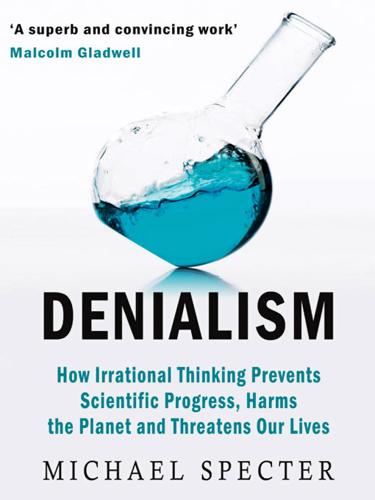
Denialism: How Irrational Thinking Hinders Scientific Progress, Harms the Planet, and Threatens Our Lives
by
Michael Specter
Published 14 Apr 2009
Trick or Treatment: The Undeniable Facts about Alternative Medicine. New York: W. W. Norton, 2008. Smith, Jeffrey M. Genetic Roulette: The Documented Health Risks of Genetically Engineered Foods. Fairfield, CT: Yes! Books, 2007. Smith, Merritt Roe, and Leo Marx, eds. Does Technology Drive History? The Dilemma of Technological Determinism. Cambridge, MA: MIT Press, 1994. Speth, James Gustave. The Bridge at the Edge of the World: Capitalism, the Environment, and Crossing from Crisis to Sustainability. New Haven, CT: Yale University Press, 2008. Starr, Paul. The Social Transformation of American Medicine. New York: Basic Books, 1984.
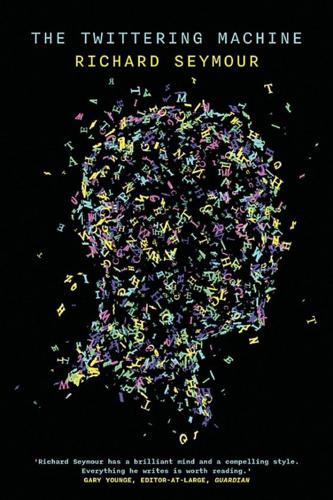
The Twittering Machine
by
Richard Seymour
Published 20 Aug 2019
YouTube’s liberal critics have a point when they underline the reality-bending effects of this kind of simulacrum. As former Google engineer Guillaume Chaslot put it, YouTube ‘looks like reality, but it is distorted to make you spend more time online’.11 From Twitter revolutions to YouTube coups, technological determinism is attractive because of the way it simplifies problems. But if we succumb to the lure, we miss the real story. The obvious question is, why should neo-Nazi material, or conspiracist infotainment, be so riveting? When pundits complain of ‘radicalization’, the assumption appears to be that it is sufficient to be exposed to far-right material to be conveyed along an escalator belt towards ‘extremism’.
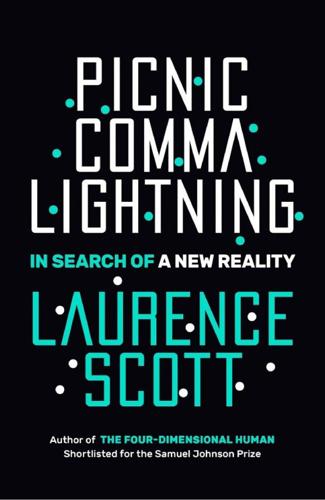
Picnic Comma Lightning: In Search of a New Reality
by
Laurence Scott
Published 11 Jul 2018
I have had my first student sending me a selfie displaying the physical signs of her illness, as part of her own dossier of exhibits supporting her plea for an essay extension. It is likely that I will be seeing more such evidence in the future, as students sense a new kind of arms race of the image, and the subsequent incredibility of the old-school, plaintive, apologetic email. Trustworthiness, after all, is not an absolute virtue, but is technologically determined by the type of proof that can be reasonably expected. Barthes believed that the invention of the photograph marked a historical shift in how we perceive reality because it allowed us to say with more assurance: ‘That was there.’ He wrote in Camera Lucida that ‘Every photograph is a certificate of presence’ and, since we no longer had to rely on mercurial memory to confirm what was there, he felt that in this new period ‘the past is as certain as the present’.
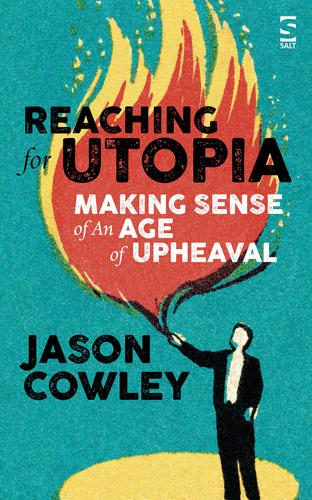
Reaching for Utopia: Making Sense of an Age of Upheaval
by
Jason Cowley
Published 15 Nov 2018
In 1932, his baby son was kidnapped; the story was a news sensation. The baby was later found dead, his body mauled by animals, in woods near the Lindbergh home. In retreat, Lindbergh moved to England, from where he travelled to Germany. There he was thrilled by the pseudo-modernity and technological determinism of the Nazi state. In July 1936, Lindbergh attended a lunch hosted in his honour by Hermann Goering and was thereafter an esteemed guest at the opening ceremony of the Berlin Olympics. ‘Germany,’ Lindbergh wrote at the time, ‘is the most interesting nation in the world today, and she is attempting to find a solution for some of our most fundamental problems.’
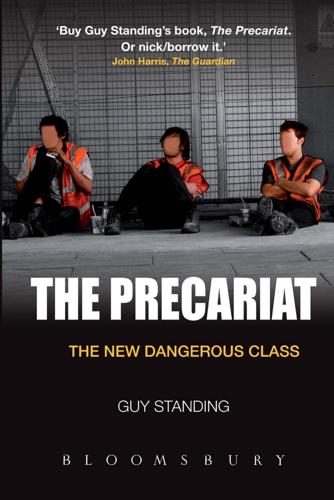
The Precariat: The New Dangerous Class
by
Guy Standing
Published 27 Feb 2011
Each economic setback was attributed in part, fairly or not, to a lack of flexibility and to the lack of ‘structural reform’ of labour markets. As globalisation proceeded, and as governments and corporations chased each other in making their labour relations more flexible, the number of people in insecure forms of labour multiplied. This was not technologically determined. As flexible labour spread, inequalities grew, and the class structure that underpinned industrial society gave way to something more complex but certainly not less class based. We will come back to this. But the policy changes and the responses of corporations to the dictates of the globalising market economy generated a trend around the world that was never predicted by the neo-liberals or the political leaders who were putting their policies into effect.

The Impulse Society: America in the Age of Instant Gratification
by
Paul Roberts
Published 1 Sep 2014
Princeton, NJ: Princeton University Press, 2005. Slade, Giles. Made to Break: Technology and Obsolescence in America. Cambridge, MA: Harvard University Press, 2009. Smith, Adam. The Wealth of Nations. New York: Penguin Classics, 1982. Smith, Merrit Roe, and Leo Marx, eds. Does Technology Drive History? The Dilemma of Technological Determinism. Cambridge, MA: MIT Press, 1994. Sunstein, Cass R. Republic.com 2.0: Revenge of the Blogs. Princeton, NJ: Princeton University Press, 2007. ———. Why Societies Need Dissent (Oliver Wendell Holmes Lectures). Cambridge, MA: Harvard University Press, 2003. Thaler, Richard H. Quasi Rational Economics.
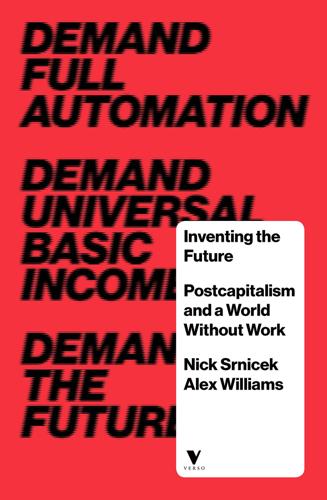
Inventing the Future: Postcapitalism and a World Without Work
by
Nick Srnicek
and
Alex Williams
Published 1 Oct 2015
Jeremy Gilbert, ‘Hegemony Now’, 2013, at academia.edu, p. 16. 18.David Harvey, Spaces of Hope (Berkeley, CA: University of California Press, 2000), p. 159. 19.Judy Wajcman, TechnoFeminism (Cambridge: Polity, 2004), p. 35. 20.Jonathan Joseph, Hegemony: A Realist Analysis (New York: Routledge, 2002). 21.Thomas Hughes, ‘Technological Momentum’, in Merritt Roe Smith and Leo Marx, eds, Does Technology Drive History? The Dilemma of Technological Determinism (Cambridge, MA: MIT Press, 1994); and Networks of Power: Electrification in Western Society, 1880–1930 (Baltimore, MD: Johns Hopkins University Press, 1993). 22.This is what Peter Thomas argues: ‘Gramsci … was aware that all social practices are interrelated, precisely because of his Marxist emphasis on social practices as social relations within a social totality, not merely as the expressions of some regional logics.
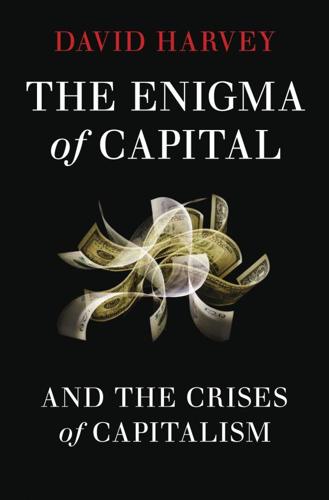
The Enigma of Capital: And the Crises of Capitalism
by
David Harvey
Published 1 Jan 2010
When the architect on the South Korean urban jury said only mental conceptions matter, he was making a very common move doubtless impelled by an understandable desire for simplification. But such simplifications are both unwarranted and dangerously misleading. We are, in fact, surrounded with dangerously oversimplistic monocausal explanations. In his bestselling 2005 book The World is Flat, the journalist Thomas L. Friedman shamelessly espouses a version of technological determinism (which he mistakenly attributes to Marx). Jared Diamond’s Guns, Germs and Steel (1997) argues that the relation to nature is what counts, thus transforming human evolution into a tale of environmental determinism. Africa is poor for environmental reasons, not, he says, because of racial inferiorities or (what he does not say) because of centuries of imperialist plundering, beginning with the slave trade.

Uberland: How Algorithms Are Rewriting the Rules of Work
by
Alex Rosenblat
Published 22 Oct 2018
The bill, which overrides local ordinances, classified drivers as independent contractors and clarified that drivers would not be required to undergo fingerprint-based background checks.31 A tension, like that between Uber’s desirability and its irascibility, pervades its many partnerships. Uber’s advances can sometimes seem like technological determinism; their advances rely on the idea that Uber and all its practices are inevitable. The National Employment Law Project, together with the Partnership for Working Families, provides another analysis, suggesting that Uber and Lyft deploy a two-stage “shock doctrine” to get their way. In the first stage, they manufacture a crisis with a municipal regulator, such as Austin, and in the second stage they appeal to the state legislature for relief.
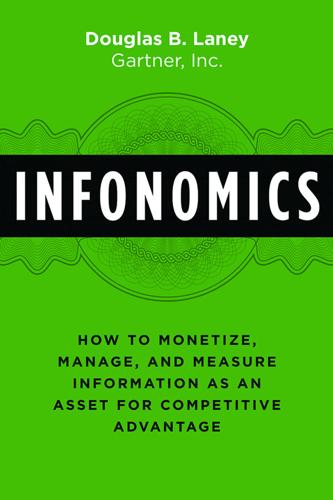
Infonomics: How to Monetize, Manage, and Measure Information as an Asset for Competitive Advantage
by
Douglas B. Laney
Published 4 Sep 2017
And just as with physical assets, information-borne risks include: the business impact from inaccurate, missing, incomplete, and delayed information; integrity issues between multiple information assets; issues of precision; and information misunderstandings (typically due to a lack of metadata). It may seem cumbersome to assess risk at this level, but with data sampling techniques and data profiling technology, determining most of these metrics on a periodic basis can be straightforward and inexpensive. The trick then is to link these risk metrics to their probable business impact. Once these probabilities are established they should be applied to the various remediation expenses involved, including: Financial data breach penalties, Breach notification costs, Opportunity cost due to loss of customer revenue, Replacement cost of deleted data due to lost customers, malicious or accidental activity, Data security remediation tasks, Additional data security product purchases, Increased cyber insurance premiums, and Legal expenses and potential litigation.
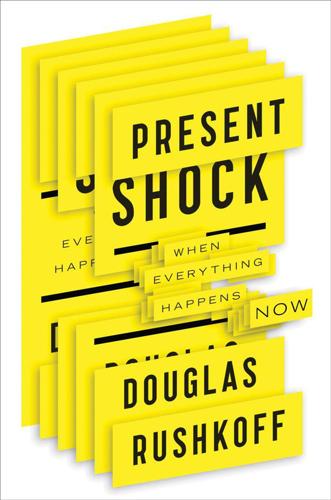
Present Shock: When Everything Happens Now
by
Douglas Rushkoff
Published 21 Mar 2013
In the season three finale (the most-watched basic-cable hour ever) the protagonist murders his best friend and squad car partner—who just so happens to be in love with his wife. The writers are at pains to cast the humans as not simply responding as necessary to apocalyptic circumstances, but using these circumstances as an excuse to act upon long-repressed impulses. The zombie apocalypse not only relieves us of our highly stressed, overcivilized, and technologically determined lives, it reveals the savagery and selfishness innate to our species. We have no morality separating us from brute nature or even lifeless matter, so we humans may as well be walking dead. TRANSCENDING HUMANITY For all the flesh eating going on in the zombie genre, there’s something positively flesh loathing about the psychology underlying it.
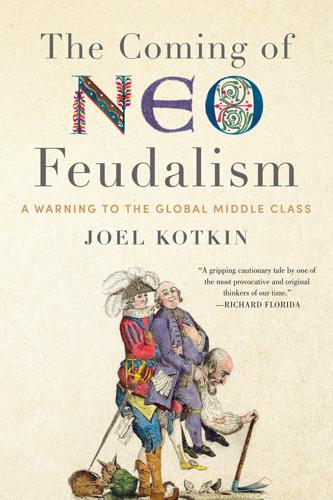
The Coming of Neo-Feudalism: A Warning to the Global Middle Class
by
Joel Kotkin
Published 11 May 2020
Google’s vision for the future is characterized by “immersive computing,” in which the real and virtual worlds blend together.18 Tech leaders like Ray Kurzweil, longtime head of engineering at Google, speak about creating a “posthuman” future, dominated by artificial intelligence and controlled by computers and those who program them. They look forward to having the capacity to reverse aging and to download their consciousness into computers. This vision rests on a faith in—or an obsession with—technological determinism, in which new technology is our evolutionary successor.19 But is this what most people want the future to be? The Cultural Revolution What the tech oligarchs are already doing to control the culture should raise alarm. The IT revolution once appeared to be launching a more democratic era in communications, with the “de-massified media” that Alvin Toffler optimistically predicted.
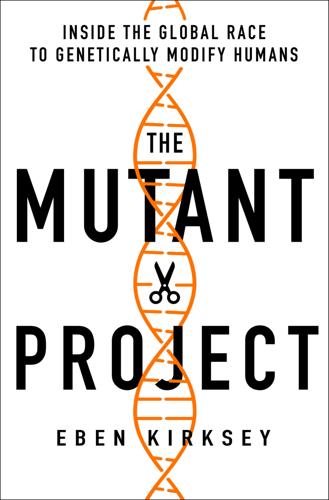
The Mutant Project: Inside the Global Race to Genetically Modify Humans
by
Eben Kirksey
Published 10 Nov 2020
* * * Donna Haraway is perhaps best known for her “Cyborg Manifesto,” a call to explore “the pleasures and politics of embodiment.”8 She published this influential essay in 1984 as a response to other feminists and lefty cultural critics who were rejecting new technologies like personal computers and the internet. At the time many intellectuals were linking social oppression to technological determinism. Haraway shared the critical sensibilities of thinkers who were deeply suspicious of science being driven by capitalism, militarism, and nationalism. Even so, she saw that technologies initially developed by the military—like the internet—could be pushed to become “exceedingly unfaithful to their origins.”
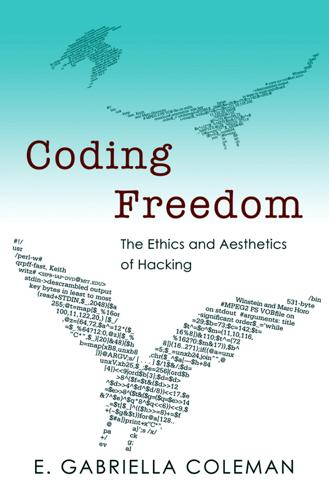
Coding Freedom: The Ethics and Aesthetics of Hacking
by
E. Gabriella Coleman
Published 25 Nov 2012
Chicago: University of Chicago Press. Jones, Caroline A., and Peter Galison, eds. 1998. Picturing Science, Producing Art. New York: Routledge. Jones, Graham. 2011. Trade of the Tricks: Inside the Magician’s Craft. Berkeley: University of California Press. Jordan, Tim. 2008. Hacking: Digital Media and Technological Determinism. Cambridge, UK: Polity Press. Joyce, Patrick. 2003. The Rule of Freedom: Liberalism and the Modern City. New York: Verso. Juris, Jeffrey S. 2008. Networking Futures: The Movements against Corporate Globalization. Durham, NC: Duke University Press. Karanovic, Jelena. 2010. Contentious Europeanization: The Paradox of Becoming European through Anti-Patent Activism.
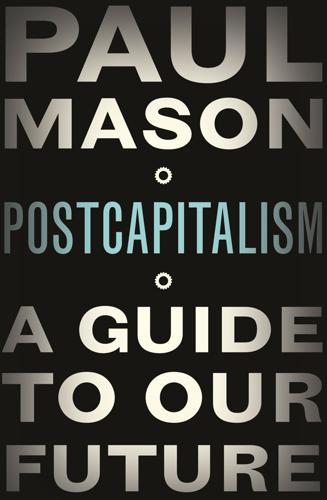
Postcapitalism: A Guide to Our Future
by
Paul Mason
Published 29 Jul 2015
Those who first spotted such networked individuals mistook them for nihilists who could never effect change. On the contrary, I have argued (in Why It’s Kicking Off Everywhere, 2012) that the new wave of struggles beginning in 2011 is a signal that this group does fight, and does embody similar and technologically determined values, wherever it takes to the streets. If so, it becomes necessary to say something that many on the left will find painful: Marxism got it wrong about the working class. The proletariat was the closest thing to an enlightened, collective historical subject that human society has ever produced.
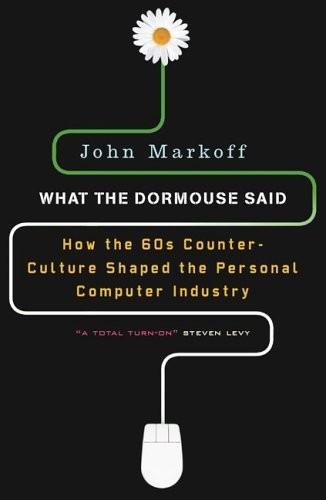
What the Dormouse Said: How the Sixties Counterculture Shaped the Personal Computer Industry
by
John Markoff
Published 1 Jan 2005
Summer of Love: The Inside Story of LSD, Rock & Roll, Free Love, and High Times in the Wild West. New York: Dutton, 1994. Smith, Douglas K., and Robert C. Alexander. Fumbling the Future: How Xerox Invented, Then Ignored, the First Personal Computer. New York: William Morrow, 1988. Smith, Merritt Roe, and Leo Marx. Does Technology Drive History?: The Dilemma of Technological Determinism. Cambridge, Mass.: MIT Press, 1994. Solnit, Rebecca. River of Shadows: Eadweard Muybridge and the Technological Wild West. New York: Viking, 2003. Stevens, Jay. Storming Heaven: LSD and the American Dream. New York: Atlantic Monthly Press, 1987. Stolaroff, Myron J. Thanatos to Eros: 35 Years of Psychedelic Exploration Ethnomedicine and the Study of Consciousness (Series Ethnomedicine and the Study of Consciousness = Reihe), Verlag for Wissenschaft Und Bildung, 1994.
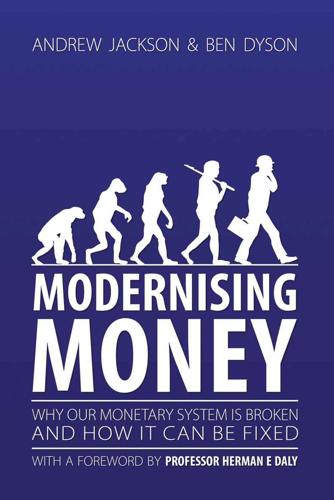
Modernising Money: Why Our Monetary System Is Broken and How It Can Be Fixed
by
Andrew Jackson (economist)
and
Ben Dyson (economist)
Published 15 Nov 2012
The labor employed in executive offices, advertising, marketing, sales, lobbying, research, product development, corporate lawyers, and so forth is not required by the technology embodied in capital assets. The services supplied by this labor may be vital to the functioning and survival of the organization in a given business environment, but in no sense are these costs technologically determined.” (Minsky, 1986, pp. 173-174) In today’s economy increases in lending for investment may also be non-inflationary at full employment so long as it attracts labour and capital that was previously not used to produce goods and services – that is, it must lead to an increase in the amount of goods produced in an economy.

Mood Machine: The Rise of Spotify and the Costs of the Perfect Playlist
by
Liz Pelly
Published 7 Jan 2025
Jeremy Wade Morris has built on Katz’s notion of “phonograph effects” by calling these “platform effects”—how the pressures of various digital music platforms shape the sound of music released on said platforms.14 These academic terms are especially helpful in breaking down the overly simplistic narrative of what gets called technological determinism—that these powerful technological systems are controlling us like puppet masters, deciding our actions. At the same time, it would be untrue to claim that our lives are not shaped by technology and media. In the middle is an idea called “affordances,” a concept introduced by the psychologist J.
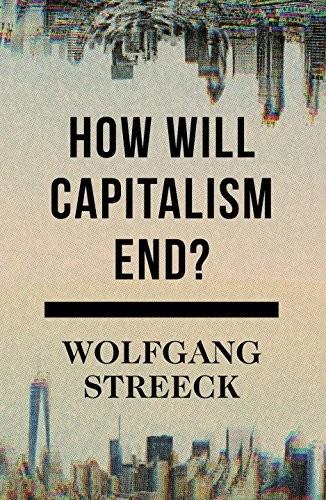
How Will Capitalism End?
by
Wolfgang Streeck
Published 8 Nov 2016
That insight, as adapted by Collins, is that capitalism is subject to ‘a long-term structural weakness’, namely ‘the technological displacement of labor by machinery’ (p. 37). Collins is entirely unapologetic for his strictly structuralist approach, even more structuralist than Wallerstein’s, as well as his mono-factorial technological determinism. In fact, he is convinced that ‘technological displacement of labor’ will have finished capitalism, with or without revolutionary violence, by the middle of this century – earlier than it would be brought down by the, in principle, equally destructive and definitive ecological crisis, and more reliably than by comparatively difficult-to-predict financial bubbles.
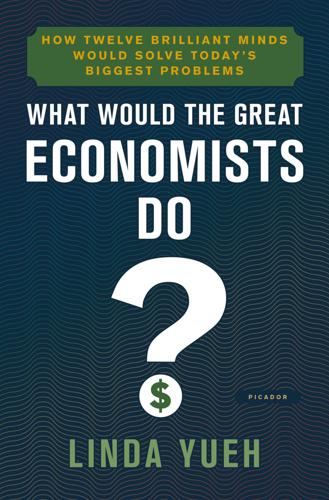
What Would the Great Economists Do?: How Twelve Brilliant Minds Would Solve Today's Biggest Problems
by
Linda Yueh
Published 4 Jun 2018
Therefore the effectiveness of innovation in increasing output would be paced by the rate of gross investment.’16 Reversing the decline in investment, especially since the 2008 crisis, takes on a new urgency, since as Solow observed: ‘the way remains open for a reasonable person to believe that the stimulation of investment will favor faster intermediate-run growth through its effect on the transfer of technology from laboratory to factory’.17 In short, whether we face a slow-growth future depends on increasing investment and decreasing unemployment, because both of these factors affect the innovation and technology improvements that underpin economic growth, as per Solow’s model. Since technology determines the prospects of an economy, how much is invested in capital and people matters a great deal. Those productive factors determine how innovative an economy can be, and thus its economic future, or its new equilibrium path. In Solow’s view: The new equilibrium path will depend on the amount of capital accumulation that has taken place during the period of disequilibrium, and probably also on the amount of unemployment, especially long-term unemployment, that has been experienced.

The Great Economists: How Their Ideas Can Help Us Today
by
Linda Yueh
Published 15 Mar 2018
Therefore the effectiveness of innovation in increasing output would be paced by the rate of gross investment.’16 Reversing the decline in investment, especially since the 2008 crisis, takes on a new urgency, since as Solow observed: ‘the way remains open for a reasonable person to believe that the stimulation of investment will favor faster intermediate-run growth through its effect on the transfer of technology from laboratory to factory’.17 In short, whether we face a slow-growth future depends on increasing investment and decreasing unemployment, because both of these factors affect the innovation and technology improvements that underpin economic growth, as per Solow’s model. Since technology determines the prospects of an economy, how much is invested in capital and people matters a great deal. Those productive factors determine how innovative an economy can be, and thus its economic future, or its new equilibrium path. In Solow’s view: The new equilibrium path will depend on the amount of capital accumulation that has taken place during the period of disequilibrium, and probably also on the amount of unemployment, especially long-term unemployment, that has been experienced.
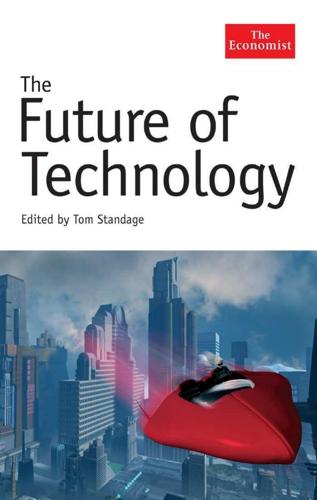
The Future of Technology
by
Tom Standage
Published 31 Aug 2005
But software patches are issued all the time, and keeping up with new patches and deciding which to install is more than many system administrators can manage. Within a week of Code Red’s appearance, 300,000 computers were infected with it. Sometimes it defaced infected web servers with the message “Hacked by Chinese!”, which suggested a political motivation, but the identities and motives of virus writers can rarely be 49 THE FUTURE OF TECHNOLOGY determined for sure. Similarly, Nimda, a particularly vigorous virus/worm which struck on September 18th 2001, was initially assumed to have some connection with the previous week’s terrorist attacks, though this now seems unlikely. Viruses are extremely widespread, which is more than can be said for meaningful statistics about them.
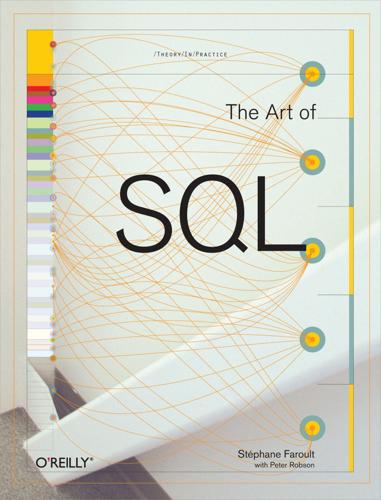
The Art of SQL
by
Stephane Faroult
and
Peter Robson
Published 2 Mar 2006
To a large extent, getting down to the details is an exercise similar to that which is known in managerial circles as "activity-based costing." In a company, knowing in some detail how much you spend is relatively easy. However, relating costs to benefits is an exercise fraught with difficulties, notoriously for transverse operations such as information technology. Determining if you spend the right amount on hardware, software, and staff, as well as the rubber bands and duct tape required to hold everything together is extremely difficult, particularly when the people who actually earn money are "customers" of the IT department. Assessing whether you do indeed spend what you should has three prerequisites: Knowing what you spend Knowing what you get for the money Knowing how your return on investment compares with acknowledged standards In the following subsections, I shall consider each of these points in turn in the context of database systems.

Data and Goliath: The Hidden Battles to Collect Your Data and Control Your World
by
Bruce Schneier
Published 2 Mar 2015
The two missions were complementary because different countries used different communications systems, and military personnel and civilians used different ones as well. But as I described in Chapter 5, that world is gone. Today, the NSA’s two missions are in conflict. Laws might determine what methods of surveillance are legal, but technologies determine which are possible. When we consider what security technologies we should implement, we can’t just look at our own countries. We have to look at the world. We cannot simultaneously weaken the enemy’s networks while still protecting our own. The same vulnerabilities used by intelligence agencies to spy on each other are used by criminals to steal your financial passwords.

The Best Business Writing 2013
by
Dean Starkman
Published 1 Jan 2013
Take this highly confusing sentence: “Good Technik requires a combination of the attributes that deliver high human development, economic growth, political inclusiveness, and technology preparedness.” Translation: “Good Technik requires Technik.” As for the simplistic part, try this: “Technik unites the scientific and mechanical dimensions of technology (determinism) with a necessary concern for its effect on humans and society (constructivism).” If I read the Khannas correctly—and I cannot be sure, for they seem confused about the terms “determinism” or “constructivism,” at least as those are used in the philosophy of technology—their novel interpretation of the old German term Technik proposes to reveal that technologies are material and technologies have effects.

Convergence Culture: Where Old and New Media Collide
by
Henry Jenkins
Published 31 Jul 2006
Inspirational consumers: According to K e v i n Roberts, the most hardcore and committed consumers of a particular brand, w h o are most active i n publicly expressing their brand preferences but w h o also exert pressure on the producing company to ensure its fidelity to certain brand values. Intensive knowledge: According to James Gee, the knowledge each i n dividual brings into an affinity space or knowledge community. Interactivity: The potential of a new media technology (or of texts produced w i t h i n that medium) to respond to consumer feedback. The technological determinants of interactivity (which is most often prestructured or at least enabled b y the designer) contrasts w i t h the social and cultural determinants of participation (which is more open ended and more fully shaped by consumer choices). Intertextual commodity: According to D a v i d Marshall, a new approach to media production that integrates marketing and entertainment content as the story moves from the screen onto the Web.
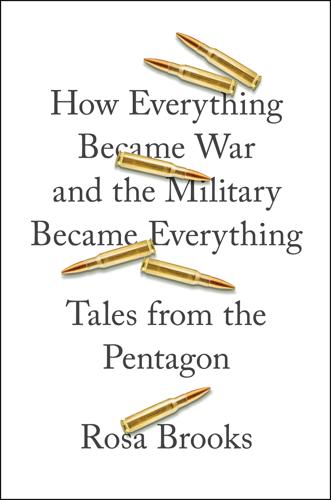
How Everything Became War and the Military Became Everything: Tales From the Pentagon
by
Rosa Brooks
Published 8 Aug 2016
Police will soon have the ability to use such technologies to track the movements and communications of thousands of people, searching for those whose travel patterns suggest links to gang activity.73 The trouble is, these powerful new technologies can also introduce powerful new errors, leading to faulty guilt-by-association assumptions. Say pattern recognition technologies determine that the same unidentified man is repeatedly driving to, from, and between the houses of known gang members, or telephone metadata indicate frequent calls between the man and the known gang members. The data might be assumed to indicate that the unidentified man is part of a criminal network—but in reality, he might simply be the pizza delivery guy.

If Mayors Ruled the World: Dysfunctional Nations, Rising Cities
by
Benjamin R. Barber
Published 5 Nov 2013
William Gibson A host of enthusiasts, from the early pioneers of Wired Magazine and the Electronic Frontier Foundation to the newest innovators of City Protocol (the new web-based global cities network in Barcelona), are persuaded that digitally linked, so-called smart cities are on the cutting edge of urban innovation. In keeping with the soft technological determinism of Google founder Eric Schmidt and his ideas director Jared Cohen (a political scientist), many observers are sure that “the new digital age” is “reshaping the future of people, nations and business.”1 Integral to this idea of a digital world is the notion of smart cities, which are presumed to have the potential to give new meaning to the idea of digital rights and to promote intercity cooperation.

Blood in the Machine: The Origins of the Rebellion Against Big Tech
by
Brian Merchant
Published 25 Sep 2023
These executives and managers may feel as if they have no choice, with shareholders and boards and bosses of their own to answer to, and a system that incentivizes the making of these decisions—but they are exactly that: decisions, made by people. Pretending otherwise, that robots are inevitable, is technological determinism and leads to a dearth in critical thinking about when and how automation is best implemented. The Luddites knew exactly who owned the machinery they destroyed. They saw that automation is not a faceless phenomenon that we must submit to. And they were right: Automation is, quite often and quite simply, a matter of the executive classes locating new ways to enrich themselves, not unlike the factory bosses of the Luddite days.
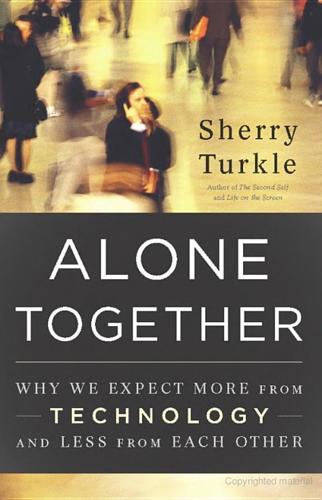
Alone Together
by
Sherry Turkle
Published 11 Jan 2011
If I put it on the computer, I don’t have to think about it anymore”). This is what Gordon Bell calls “clean living”—but with a difference. In Bell’s utopian picture, after the saving comes the sifting and savoring. For Rhonda, the practice of saving is an end in itself. Don and Rhonda suggest a world in which technology determines what we remember of the story of our lives. Observing software “learns” our “favorites” to customize what it is important to remember. Swaddled in our favorites, we miss out on what was in our peripheral vision. The memex and MyLifeBits both grew out of the idea that technology has developed capacities that should be put to use.
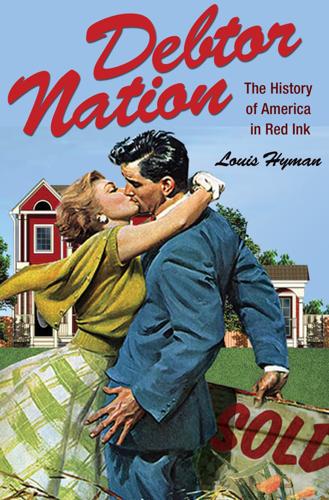
Debtor Nation: The History of America in Red Ink (Politics and Society in Modern America)
by
Louis Hyman
Published 3 Jan 2011
Behavioral models, the first to be widely used, focused on avoiding default. Fair, Isaac, the company that created the FICO score and foremost credit model firm, estimated that while in 1989 issuers used such models on only 14 percent of credit card SECURING DEBT 267 accounts, 75 percent did by 1992.213 To a large degree, this timing was technologically determined. In only a few years, computing power doubled, software prices fell by half, and data availability grew, allowing the vast majority of issuers to employ such techniques. Companies frequently developed their own software, often in concert with outside advisors. Banc One, for instance, turned to Andersen Consulting for help developing its proprietary system, Triumph, which used the latest data-mining techniques to price risk.
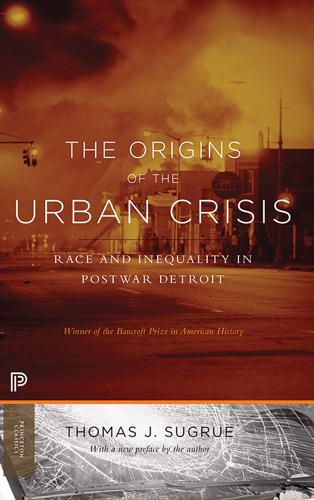
The Origins of the Urban Crisis
by
Sugrue, Thomas J.
First, they believed that the major cause of industrial flight was the lack of new land for industrial development within the city. Second, they believed that most of Detroit’s existing factories were superannuated or unusable in the age of automation. Their understanding of the industrial change of the 1950s rested on the fallacy of technological determinism. Automation, in their estimate, was the inevitable consequence of the march of industrial progress. If only city planners could figure out how to accommodate the demands of new automated plants, they could maintain the city’s industrial base and prevent the further hemorrhage of manufacturing jobs.41 The centerpiece of Detroit’s reindustrialization policy was “industrial renewal,” a complement to the downtown commercial and housing redevelopment plans that the Detroit City Plan Commission had begun proposing in the early 1940s.

Firepower: How Weapons Shaped Warfare
by
Paul Lockhart
Published 15 Mar 2021
But none detracts from the validity of Michael Roberts’s main idea: that, at the end of the Middle Ages, changes in the conduct of war helped to bring about a sweeping political and social transformation in Europe, that many if not most of the salient characteristics of the modern state can be traced directly to military factors, and that the emerging dynastic states were entities geared first and foremost toward war making. This is not to say that the gunpowder revolution was the cause of the military revolution, and therefore the root factor in the rise of the centralized state. That would be technological determinism, the idea that technology drives the development of every other aspect of society, politics, and culture. Nor can we argue that gunpowder was the thing that gave the states of the West a power advantage over all other civilizations around the globe, for clearly other cultures and other states—Ottoman, Chinese, and Indian—exploited gunpowder technology as thoroughly as Europe did.

1491
by
Charles C. Mann
Published 8 Aug 2005
Their work fed a tsunami of inquiry into the interactions between natives and newcomers in the era when they faced each other as relative equals. “No other field in American history has grown as fast,” marveled Joyce Chaplin, a Harvard historian, in 2003. The fall of Indian societies had everything to do with the natives themselves, researchers argue, rather than being religiously or technologically determined. (Here the claim is not that indigenous cultures should be blamed for their own demise but that they helped to determine their own fates.) “When you look at the historical record, it’s clear that Indians were trying to control their own destinies,” Salisbury said. “And often enough they succeeded”—only to learn, as all peoples do, that the consequences were not what they expected.

Hard Landing
by
Thomas Petzinger
and
Thomas Petzinger Jr.
Published 1 Jan 1995
Huffing and puffing like any four-pack-a-day man bearing a suitcase and briefcase, Kelleher angled past the limo drivers and walked outdoors to light up and stand in line for a cab into the city. POSTSCRIPT: MAGIC ACT The history of marketing and technology is the history of ourselves. While marketing reveals what we want as a society, technology determines what we are capable of fulfilling. What do we want from our airlines? We want them to take us wherever we choose anytime we like, and we want them to do so at a low price. With their superb use of information technology, the airlines go a long way toward fulfilling these wants, but with an important limitation: they cannot satisfy both demands simultaneously.

Empire of Guns
by
Priya Satia
Published 10 Apr 2018
Columbia University Journal of Politics & Society 25 (Fall 2014): 6–26. Raudzens, George. “Military Revolution or Maritime Evolution? Military Superiorities or Transportation Advantages as Main Causes of European Colonial Conquests to 1788.” Journal of Military History 63 (1999): 631–41. ——— . “War-Winning Weapons: The Measurement of Technological Determinism in Military History.” Journal of Military History 54 (1990): 403–34. ———, ed. Technology, Disease and Colonial Conquests, Sixteenth to Eighteenth Centuries: Essays Reappraising the Guns and Germs Theories. Boston: Brill, 2001. Rawley, James A., and Stephen D. Behrendt. The Transatlantic Slave Trade: A History.

The Transhumanist Reader
by
Max More
and
Natasha Vita-More
Published 4 Mar 2013
Still, the intersection between population modeling, empirical studies of technological and economic growth, and growth models appears to afford much empirically constrained modeling. The fact that long-term (at least) exponential growth can occur and that many not too implausible endogenous growth models can produce radical growth appears to support some forms of the singularity concept. A common criticism is that technological singularity assumes technological determinism. This appears untrue: several if not all of the singularity concepts in the introduction could apply even if technology just exhibited trends driven by non-deterministic (but not completely random) microlevel decisions. After all, population models are not criticized as being “biologically deterministic” if they do not model microscale dynamics – ignoring contingency and statistical spread are merely part of the normal modeling process, and further models may if needed include such subtle details.
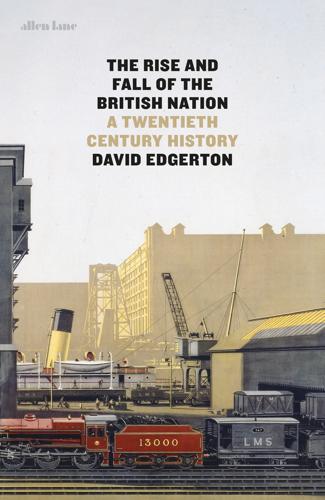
The Rise and Fall of the British Nation: A Twentieth-Century History
by
David Edgerton
Published 27 Jun 2018
In its Manifesto for New Times (1989) the party told its workers that socialists did ‘not yet confidently speak the language of the future’, that capitalism was entering a new phase – of robots, computers, satellite television – and that what was needed was an alternative to Thatcherism’s ‘regressive modernisation’.3 The party journal, Marxism Today, opened its pages to politicians to its right, including Tony Blair, before he became Labour leader.4 The central idea of New Times was a classic vulgar-Marxist technological determinism, which, it must be noted, is, while vulgar, generally rather richer than the usual non-Marxist variety. The post-war ‘settlement’ was being remade, it was claimed: Fordism, standardized mass production, was giving way to post-Fordism (‘the economic and industrial core of the new times’), a more flexible system of production.

The Stack: On Software and Sovereignty
by
Benjamin H. Bratton
Published 19 Feb 2016
Architects of a typical Cloud-based platform may organize the system according to the provision (and strategic throttling) of data through application programming interfaces (APIs) that make many different kinds of platform effects possible, the sources of which may be opaque to the most common Users or even to other components of the system. 17.. Platform sovereignty may be planned or unplanned, universal or specific, generative or reactive, technologically determined or politically guaranteed. Platform sovereignty is automatic under some circumstances and highly contingent under others, and it may function differently in relation to different components of the platform system. The conditionality of these is a function of how platforms relate to other political, technical, and economic institutions that also manage something (or someone) that is also organized by that platform.

Enlightenment Now: The Case for Reason, Science, Humanism, and Progress
by
Steven Pinker
Published 13 Feb 2018
Foremost is a historical discovery summarized by the political scientist Robert Jervis: “The Soviet archives have yet to reveal any serious plans for unprovoked aggression against Western Europe, not to mention a first strike against the United States.”89 That means that the intricate weaponry and strategic doctrines for nuclear deterrence during the Cold War—what one political scientist called “nuclear metaphysics”—were deterring an attack that the Soviets had no interest in launching in the first place.90 When the Cold War ended, the fear of massive invasions and preemptive nuclear strikes faded with it, and (as we shall see) both sides felt relaxed enough to slash their weapon stockpiles without even bothering with formal negotiations.91 Contrary to a theory of technological determinism in which nuclear weapons start a war all by themselves, the risk very much depends on the state of international relations. Much of the credit for the absence of nuclear war between great powers must go to the forces behind the decline of war between great powers (chapter 11). Anything that reduces the risk of war reduces the risk of nuclear war.
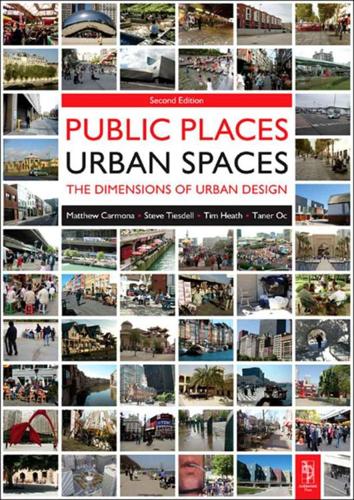
Public Places, Urban Spaces: The Dimensions of Urban Design
by
Matthew Carmona
,
Tim Heath
,
Steve Tiesdell
and
Taner Oc
Published 15 Feb 2010
One pattern of settlement is superior to another only as it better serves to accommodate ongoing social processes and to further the non-spatial ends of the political community. I am flatly rejecting the contention that there is an overriding spatial or physical aesthetic of urban form.’ (Webber 1963: 52) Recognising the instrumental impact of transport and communication technology does not equate to technological determinism – the application of technology is mediated by social trends. Decentralisation, the so-called ‘death of distance’ and the end of the city, are not foregone conclusions: technology creates opportunities, which people – at least those with choice – take advantage of. As Hall (1998: 943) argues,‘… new technology shapes new opportunities, to create new industries and transform old ones, to present new ways of organising firms or entire societies, to transform the potential for living; but it does not compel these changes.’

Command and Control: Nuclear Weapons, the Damascus Accident, and the Illusion ofSafety
by
Eric Schlosser
Published 16 Sep 2013
I’ve never had much patience for theories of historical inevitability—and in recent years a number of scholars have applied a healthy skepticism to the traditional view that scientific inventions are somehow the logical, necessary result of some previous development. They have challenged a simplistic technological determinism, suggesting that every manmade artifact is created within a specific social context. Donald MacKenzie, a professor of sociology at Edinburgh University, greatly influenced my thinking about how and why new inventions are made. MacKenzie has edited, with Judy Wajcmann, a fine collection that explores some of these ideas: The Social Shaping of Technology: Second Edition (New York: Open University Press, 1999).
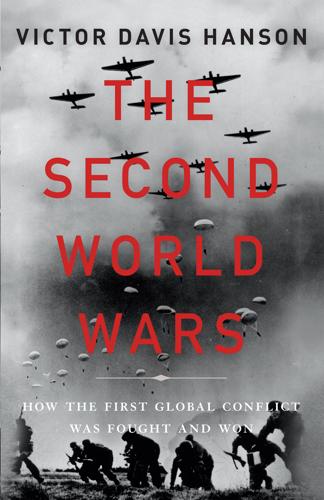
The Second World Wars: How the First Global Conflict Was Fought and Won
by
Victor Davis Hanson
Published 16 Oct 2017
There had been centuries of conflicts fueled by religious ideas, revolutionary fervor, and ethnic chauvinism in the West—from the Crusades to the Thirty Years’ War to the Napoleonic Wars—that transcended traditional disputes over personalities, succession, territory, resources, or politics. But totalitarian ideologies of World War II, often claiming pedigrees from Darwin and Nietzsche to Marx and Engels, reenergized theories of racial superiority, state power, mass participation of civilians, technological determinism, and national destinies as never quite seen in the 2,500 years of Western history. Modernism had helped to reinvent morality in relativist terms. The 1930s championed the statist idea that the interests of the strong collective trumped the supposed selfishness of the weaker individual, as dying and killing were easily justified as necessary means to achieve utopian ends.

The Age of Surveillance Capitalism
by
Shoshana Zuboff
Published 15 Jan 2019
Langdon Winner again proves to be a worthy guide when he reminds us that an unquestioning acceptance of technology has become a feature of modern life: “The changes and disruptions that an evolving technology repeatedly caused in modern life were accepted as given or inevitable simply because no one bothered to ask whether there were other possibilities.”70 Winner observes that we have allowed ourselves to become “committed” to a pattern of technological “drift,” defined as “accumulated unanticipated consequences.” We accept the idea that technology must not be impeded if society is to prosper, and in this way we surrender to technological determinism. Rational consideration of social values is considered “retrograde,” Winner writes, “not the ticket that scientific technology gives to civilization.… To this day, any suggestions that the forward flow of technological innovation be in any way limited… violate a fundamental taboo.… Instead we accept the change, later looking back upon what we have done to ourselves as a topic of curiosity.”71 To Winner’s “curiosity” I add another theme: remorse.

The Invention of Science: A New History of the Scientific Revolution
by
David Wootton
Published 7 Dec 2015
Everyone understood the nature of a machine, and the experience of making and using such things had become part of the general consciousness of European man. It was an easy step to the proposition: as a clockmaker or millwright is to a clock or mill, so is God to Nature. – R. G. Collingwood, The Idea of Nature (1945)1 § 1 The great philosopher and archaeologist R. G. Collingwood proposed a fairly straightforward technological determinism: new machines encourage new ways of thinking. There are two problems with his argument. The first is that the only machine that he lists that was new in the Renaissance was the printing press. The Middle Ages, it has long been maintained, saw a technological revolution, with the invention of the clock, the widespread diffusion of the water mill and the wheelbarrow, and the development of the various hoists and windlasses required to build the cathedrals; the view of nature as a machine should have come not in the sixteenth century but the fourteenth.2 The second problem is even more fundamental: although Collingwood devotes a long chapter to the Renaissance idea of nature, and returns to the claim that the Renaissance viewed nature as a machine, he never gives a single example of someone describing nature as being like a machine.

The Better Angels of Our Nature: Why Violence Has Declined
by
Steven Pinker
Published 24 Sep 2012
As for the nuclear peace, we have seen that nuclear weapons may have made little difference to the course of world events, given their uselessness in battle and the massive destructive power of conventional forces (chapter 5). And the popular (if bizarre) argument that nuclear weapons would inevitably be used by the great powers to justify the cost of developing them turned out to be flat wrong. The failure of technological determinism as a theory of the history of violence should not be that surprising. Human behavior is goal-directed, not stimulus-driven, and what matters most to the incidence of violence is whether one person wants another one dead. The cliché of gun control opponents is literally true: guns don’t kill people; people kill people (which is not to endorse the arguments for or against gun control).